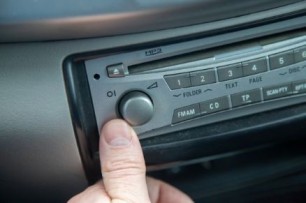General Insurance Blogs, Articles & Updates by - Magma HDI
Have us call you
- RENEW YOUR POLICY
- BUY NEW POLICY

What voids your vehicle’s warranty? Here’s what you need to know
When you buy a new car, the seller offers you a warranty for a certain period. A warranty is an assurance claiming that any vehicle repairs or replacement of parts will be done in case of a manufacturing defect. A warranty is paramount because a vehicle consists of various mechanical parts, and it assures you a hassle-free car ownership experience.
Many owners are unaware that the warranty is subjected to certain factors. Owners commit a few mistakes which void their vehicle’s warranty. Here are a few factors that can hamper your new vehicle’s warranty.
1. Electrical modifications:
One common reason people lose their car warranty is making unapproved electrical modifications. Many users make several electrical changes, including installing music systems, high-intensity headlamps, fog lamps, etc., from unauthorized stores. It leads to the failure of the existing electrical systems in the car due to tampering with the original wiring. It is advisable to rely on installing only the standard and branded electrical systems in your vehicle to save future costs and lower the possibility of warranty void.
2. Racing and reckless driving:
Using your regular passenger car for racing can put a lot of wear and tear on the vehicle as compared to driving normally on the road. Manufacturers keep records of license plates from racing events or reckless driving to deny your warranty claims. Rash driving usually ends up in severe unfortunate accidents, and if you are responsible for any mishap, the car manufacturing company won’t consider your car’s warranty.
3. Usage of unauthorized spare parts:
When you buy a car, you are provided with some spare parts. The car manufacturers assure these parts. However, not using original spare parts can affect your vehicle’s performance and thus hamper the warranty.
4. Irregular service:
A vehicle requires maintenance, and every car manufacturer recommends servicing your car at specific intervals. After purchasing it, failing to take care of your car can degrade its performance. On the other hand, getting your car serviced from a local unauthorized service center can affect its efficiency.
5. Flooding and natural disasters:
Remember that the seller will only conduct free repairs and replacements if there is a fault from the manufacturer’s side. If your vehicle was left unsafe during floods or other natural disasters, the warranty would not cover any such damages. Therefore, you must do whatever you can to protect your car during environmental emergencies.
6. Tampering the odometer:
Your vehicle’s odometer is one of the essential parts of a car. It indicated when it’s time for you to take your car for servicing. It can influence the amount you pay for a pre-owned car. Changing the odometer reading is considered fraud and will ruin the warranty.
To make sure your car’s warranty and your rights are protected, you must make sure that you follow the car manufacturer’s instructions and read the warranty policy thoroughly. If you have already voided your car’s warranty, you cannot claim free repairs and replacements. What you may want to consider here is getting an independent online motor insurance renewal for your vehicle to make sure you are covered, with or without a warranty.
Click HERE for online motor insurance renewal.
Disclaimer: The information provided above is for illustrative purposes only. To get more details, please refer to policy wordings and prospectus before purchasing a policy.

Ten motorcycle tips for women riders
Throughout the years, a large percentage of women have taken up motorcycle riding as a passion. With the number of riders rapidly increasing, this hobby is no longer associated with one gender. A little hand in organizing goes a long way. From a newbie rider to a professional, we have developed a list of valuable suggestions that can help women riders.
1. Choose the correct gear:
Wearing the right accessories is one of the preventative strategies. To begin, ensure you have a properly fitting full-face helmet. Purchasing these items is well worth the money since it will protect you from unfortunate mishaps.
2. Tie your hair correctly:
Women with longer hair should not leave it untied while riding. Loose hair can disturb your vision or cause discomfort, which can be disturbing when handling the bars. Tie your hair in an appropriate way to get an uninterrupted riding experience.
3. Ride at your ease:
Even if you are a seasoned rider, riding at your own pace is critical. Some aspects, including seat height, riding stance, and suitable clothing, might have a severe influence on your riding.
4. Deal with the mechanic smartly:
Firstly, go to the garage only if the problem seems severe and out of your control. Try fixing it by yourself. If not, then you may take your bike to the mechanic. Some mechanics try to fool female riders and charge more than the standard pricing for the repairs. Acquaint yourself with the knowledge of bikes and their parts to avoid getting scammed by such people.
5. Learn the basics of maintaining your bike:
It is beneficial to understand how to keep your bike in shape to improve efficiency. You will be better acquainted with your motorbike while also saving some bucks.
6. It is preferable to wear snug-fitting clothes:
Avoiding loose garments is one of the most significant factors. Your loose clothing may increase the chances of getting caught on something due to the rapid pace. To prevent this, you can wear sleek, comfy clothing.
7. Get your registration and licence:
Two vital considerations are a bike registration certificate and a driver's licence. Make sure you have a valid driver's licence before riding a motorcycle.
8. Begin your journey on a small bike:
A general recommendation is that you begin your biking experience on a small bike, with which you may acquire a fundamental understanding of motorbikes. Eventually, you can choose whatever bike you like.
9. Plan your routes:
Plan beforehand if you want to spend a good deal of time on back roads or highways where you can cover more ground in less time. Remember that even if a highway does not offer you the scenery you hoped for, planning is always safer and will get you to your destination sooner.
10. Have your bike insured:
2 wheeler insurance is also a must for your bike. Third-party insurance is made a compulsion for a motorcycle under the Motor Vehicle Act of 1988. Remember to keep your 2 wheeler insurance policy active by updating it before it lapses.
Despite being a beginner rider or a pro, it is equally vital to consider the safety requirements to minimize unanticipated incidents. These aforementioned riding tips for women will be beneficial throughout your adventure.
Click HERE to get the best deal on 2 wheeler insurance.
Disclaimer: The information provided above is for illustrative purposes only. To get more details, please refer to policy wordings and prospectus before purchasing a policy.

Best tips and remedies to deal with severe toothache
Teeth that are strong and healthy are a sign of overall wellness. However, if you have a toothache, it is critical to figure out the cause of it. When the tooth's nerve root is inflamed, it results in toothache or pain. The dental pulp, which is delicate and spongy, contains several sensitive nerves and blood vessels located in the center of each tooth. The excruciating pain is due to inflammation of the pulp deep in the tooth. The primary reason is tooth decay or cavities in the mouth. Demineralization causes the tooth structure to break down and produce pain when drinking something hot or cold.
When you have a toothache, it's ideal to see a dentist as soon as possible because cavities don't affect until an infection reaches the tooth's nerve, and they could be an indication of a much bigger problem. Here are a few practical and scientifically supported remedies that can provide temporary relief until you see a dentist.
1. Saltwater rinse:
The first-line treatment for toothache is a saltwater rinse. As a natural disinfectant, rinsing with a warm saltwater solution can help ease the pain. In addition, it can aid in the removal of food particles and debris lodged between your teeth. Saltwater can also help reduce gum inflammation and treat minor infections that may be causing a toothache. Put a teaspoon of salt into a glass of warm water. Mix it well and rinse your mouth for at least 30 seconds before spitting it out.
2. Clove:
Indian Ayurvedic practitioners have embraced the medicinal spice to relieve toothaches. Eugenol, a natural antiseptic, is present in clove oil. Applying the oil to the sore tooth with a sterile swab can help relieve pain and reduce gum inflammation and swelling. Before using clove oil, dilute it with a carrier oil (like olive oil). You may also use clove oil as a mouthwash by adding a few drops to a glass of water. To relieve pain, place a clove on the tooth and chew it for a few minutes to release the oil and see the magic happen.
3. Garlic:
Being a natural pain reliever that also fights plaque-causing germs, garlic has been used for its therapeutic benefits for thousands of years. A toothache might be relieved by applying a paste of fresh garlic with a pinch of salt to the painful area. Fresh garlic, on the other hand, can be chewed gently.
4. Onion:
Onions have high acidity and possess antibacterial and antiseptic characteristics, which help relieve tooth discomfort by eradicating the germs that cause infection. Place a freshly cut onion slice between your teeth and gently chew it to help release the juices even more.
It's vital to remember that the options listed above will only provide temporary relief. You'll need to see a dentist for long-term treatment. Ignoring a toothache and not seeking treatment can cause the pain to worsen over time.
It's vital to remember that the options listed above will only provide temporary relief. Keeping the teeth strong reciprocates to a healthier lifestyle. Practice daily oral hygiene and consume a nutrient-rich diet to keep dental problems at bay. You'll need to see a dentist for long-term treatment. If you ignore a toothache and do not seek treatment on time, your pain will worsen. To cope with health problems without spending your savings, pre-plan with affordable health insurance plans to provide utmost financial security.
To look for affordable health insurance plans, click HERE!
Disclaimer: The information provided above is for illustrative purposes only. To get more details, please refer to policy wordings and prospectus before purchasing a policy.

Things to know about before you start your skating lessons
Skating is an exciting way to have fun while exercising. It provides a complete core exercise due to the increased pulse rate, cardio, and muscular endurance. So, it's no surprise that the joy of skating draws many new skaters each year.
One great thing about skating is that it won't feel like an exercise, well, till the muscular soreness kicks in. But don't worry, that's temporary. Skating, like other sports, isn't as simple as it appears. But, with daily practice and a little enthusiasm, you can master it in no time. If you're new to skating, this blog is just what you need. We've compiled a list of things you should know before putting the rollerblades on and setting out.
1. Ensure that your skates are a perfect fit:
The ill-fitting roller skates are not only inconvenient but also unsafe. If the skates don't fit your shoes properly, you're prone to a fall that could lead to an injury. So make sure that the skates you're purchasing are neither too tight nor too loose.
2. Invest in good protective gear:
It's critical to wear the correct protection gear like helmets, wrist pads, and knee guards, especially when you're starting out. Some folks may think wearing a helmet is foolish, but they couldn't be more wrong. Even a slight head injury resulting from a fall can be fatal.
3. Take your lessons on a well-levelled surface:
It's best to start out on smooth and flat terrain. Of course, you'll be able to roller skate practically anywhere eventually. But, the idea here is to get a sense of how it feels on wheels. A cycle track can be a fantastic location to start. Basketball & tennis courts are also excellent to learn because they are commonly found in city parks and are generally smooth.
4. Learn how to take a fall correctly:
In skating, knowing how to land correctly is just as vital as learning to stay upright. This helps in avoiding major injuries or pulled muscles. Skating professionals frequently encourage newcomers to skate around a grassy area until they understand the fundamentals so that the grass may cushion their falls.
5. Few additional tips for beginners:
• Never get your skates wet. Do not skate on a damp surface.
• When you're just starting, avoid going downhill. You will not know how to stop at high speeds and end up falling terribly.
• Your skates may begin to show signs of wear and tear over time. So, make it a practice to inspect them every time you take them out.
• Hire a professional tutor to teach you.
We hope this quick set of tips will help you learn the fantastic sport quicker. Don't forget to enjoy yourself while you're at it, because the most important thing is to have fun. You will fall, bruise your knees and stretch your muscles at some stage of the process. So, don't forget to invest in best accidental insurance policy in India to protect yourself from the falls that your protective equipment may fail to save you from. Get up again, brush off the dust from your clothes and glide on.
Click HERE to know more about the best accidental insurance policy in India suited for you and your family.
Disclaimer: The information provided above is for illustrative purposes only. To get more details, please refer to policy wordings and prospectus before purchasing a policy.

Eight effective interior designing tips that are not openly shared
One common myth is that people believe the best interior designs require spending countless money. Fortunately, this is far from reality. Whether you live in a tiny room or a big bungalow, decorating your own home is all about exhibiting your aesthetic.
Everyone dreams of a beautifully adorned home. However, the proper budget plays a vital role in designing. Also, before conducting any repair or renovation work, ensure that you invest in a good house insurance India plan to cover all finances at the time of need.
So, let's dive into the hidden secrets that'll help you with all decorating needs.
1. Get rid of excess clutter:
Clutter has never been attractive and doesn't do any good to your home. Before making a design plan, you need to prioritize getting rid of all the unwanted items. Emphasise decluttering to get things flowing easily when beginning with an interior revamp. To make this task less daunting, you can take help from cleaners, friends, and family and make the job hassle-free.
2. Blend older items with modern furniture:
Every modern home should have antique or vintage items as it adds a well-collected and curated look. Bringing older pieces in furnished rooms with newer items instantly adds soul and depth.
3. Wallpaper older appliances:
If you have old appliances and want to change things, use peel and stick wallpaper to give them a fresh and new look. Wallpapers provide a contemporary look to your house's walls and surrounding areas.
4. Bring on aesthetic lights:
Investing in good-quality lighting will surely add a gorgeous touch to the room. It is recommended to switch existing bulbs with full-spectrum lights, as colour renders much better. This will prevent the room from having insufficient lighting and appearing cramped.
5. Choosing your style and colour palette:
Look through different interior design styles and choose what matches your personality. Then select the colour palette you'll like and not get bored of. Colour creates a rich visual experience and a pleasant atmosphere. They make things look more attractive and play a vital role in elevating your mood.
6. Use home accessories:
Small accessories can completely change the look and feel of your home at little to no cost. Artworks, candles, cushions, the list is long. All of these items give a modernized feel to the existing furniture. In addition, shelving organizes your study materials, business files, and books, making them look organised and clutter-free.
7. Keep open spaces:
Always preserve doorways and walking spaces. To make the space more breathable, keeping doorway or closet areas visually accessible is essential. If you cover them with furniture, your room will automatically start to feel off and dull.
8. Hide worn-out flooring with carpets:
If you don't have the budget to replace or refinish a worn-out flooring, one of the easiest ways is to cover it up. A large-scale rug or carpet tiles can bring your floor up to your design aesthetics. It also gives a comfortable place to sit, play or work. Also, carpets minimize noise by absorbing it.
Interior design isn't just limited to rearranging furniture and slapping paints. It is an art. You can turn any dull room into a masterpiece with little creativity and imagination. It is a form of expressing emotions and creativity.
Besides designing your home, as mentioned earlier, you should also invest your time and money in assuring its safety for the long run. So purchase an ideal house insurance India plan to safeguard your house and belongings from damages and loss owing to theft, fire, or flood.
Click HERE to know more about the home insurance plans suitable to your requirements.
Disclaimer: The information provided above is for illustrative purposes only. To get more details, please refer to policy wordings and prospectus before purchasing a policy.

Last-minute hacks and tips to make your home look guest-ready
We've all been at a point where we've faced the situation of sudden guests’ arrival. And a messy home isn't impressionable. It's a lot of hassle, especially when you have people coming over. Throwing away those crumbled pieces of paper, wrappers, crumbs, pizza boxes, bottles, etc. On a calm day, this can be pretty therapeutic. But when you have last-minute company about to show up at your door in the next 20 minutes, you must be on a mission.
So, how do you clean it all up and make your space ready to host people? Don't worry. This article is precisely what you need -some last-minute hacks to make your home ready for your guests. Let's discuss some tips to make your home ready to welcome your guests.
1. Go to your room:
Make your bed. Fold the sheets or your comforter, arrange your pillows, put your makeup back in the drawer and tidy up your nightstand. Declutter the scattered items and put them in their respective containers so that you can find them easily later. Fold your clothes and arrange them back in your closet. Dust off all the eye-level surfaces. Once you finish dusting, clean them with a disinfectant or a cleaner liquid.
2. Scoot to the kitchen now:
Do you see all those utensils in the sink? Wash them or put them in the dishwasher to save time. Post washing, arrange them in their suitable racks or drawers. Wipe the slab and get your serving containers ready. Arrange them properly to avoid any mess in a hurry.
3. Clean your bathroom or restroom:
Replace the used towels with some fresh ones. All the dirty clothes must go in the laundry bag. Clean the mirror. Spraying some fragrant freshener will do the magic to get off the odour. If you have overnight guests, you can keep new toothbrushes, soaps, and shampoo sachets for their ease and convenience.
4. Dining hall:
Put away all your groceries in their respective containers and cupboards. Wipe the table clean and arrange the chairs correctly. Place the meal settings- the plates, tissues, napkins, and the cutlery- to avoid the chaos of the last moment.
5. To the living room:
Tidy up your entrance. Replace the dried flowers in the vases with fresh ones. Clean up the sofa and place all the cushions. Grab all the wrappers and boxes and make sure to take out the trash. Arrange all the newspapers and remotes scattered around. Place your gadgets away from the party to avoid any spilling or damage.
You can light a candle, put on some music, get some drinks and snacks ready to serve, and there you go. A spick-and-span home that is going to be admired by your guests
While that's a wrap on some last-minute hacks to clean up your house, what about safeguarding it? Life is unpredictable, and we need to be careful about the things we love. Your home is a massive part of your life, and protecting it should be your priority. Exploring your options regarding the best home insurance policy in India is a step towards avoiding unprecedented mishaps and monetary loss and securing your home and the memories attached to it.
Click HERE to know more about best home insurance policy in India.
Disclaimer: The information provided above is for illustrative purposes only. To get more details, please refer to policy wordings and prospectus before purchasing a policy.

Twenty fitness trends you need to adopt in the year 2022
Various fitness trends have come and gone since the 2000s, but people are still looking for new ways to get fit. With the global pandemic hitting us, people now prefer to work out in their homes because of the government’s orders to close gyms. As a result, online gym classes are also on the rise. Let us look at the upcoming fitness trends in 2022.
1. Weighted hula hoops:
Swinging a weighted hula hoop around your waist can be a great addition to your workout for burning calories and losing fat.
2. All-in-one fitness:
Instead of going to different places for your wellness needs, such as the gym, nutritionist, etc., you can find these professionals working under the same roof at all-in-one online fitness centres.
3. Virtual workout:
With modern technology, you can find various fitness apps with workout plans tailored to your requirements and even videos made by professionals for your reference.
4. Stroller fitness:
Taking your kid to the park can help you stay fit. In addition, pushing a stroller and walking can burn calories. You could even do single-hand chest presses, and lunge walks.
5. Community-driven wellness:
Going to the gym alone may be boring and unmotivating for some people. However, gathering a group of friends or family with the same fitness goals will support your journey and cheer you up on the bad days.
6. Wearable tech:
Fitness pros are now using wearable fitness devices such as smartwatches to track their workouts and stay focused on their goal.
7. Reverse running:
Reverse running is the act of running in the direction that your back is facing. It improves cardiovascular efficiency and endurance by strengthening the foot muscles.
8. Virtual trainers:
Hired virtual trainers can provide one-on-one workout sessions and give you the time and guidance you need.
9. Jogging with your dog:
Dogs make the perfect partners. They are a great company to be with, and you can play catch with them. This can keep you physically active and mentally at peace.
10. Kickboxing:
Make workouts fun by adding boxing and kickboxing to them. They are enjoyable and safe for all age and weight groups.
11. Stretch and recover:
Stretching for 10 minutes every day improves posture, reduces the risk of injury, and decreases muscle soreness.
12. Meditation:
Adding 15 minutes of meditation to your workout plan can improve your focus and control, which are much needed while exercising.
13. Quality over quantity:
Instead of working out for a longer period, choose the right exercises for your goal and put your best efforts into it.
14. Disconnected fitness:
While tech is a great way for virtual workout sessions, sometimes disconnecting is needed for good mental health and general sanity.
15. Cardio-rhythm classes:
Burning calories while dancing to your favourite music can be a relaxing and refreshing way of working out.
16. ZUU:
ZUU workouts refer to movements of animals such as gorillas, frogs, and bears and aim to improve your body’s flexibility.
17. Customized programs:
Everybody has different types of bodies, capabilities, and requirements. Instead of following others, have a fitness program tailored to your needs for maximum gain.
18. Trapeze classes:
Trapeze is aerial yoga involving traditional poses, pilates, and hammock dances.
19. Building a foundation:
It is crucial to building your foundation with exercises such as squats, hinges and lunges for at least a month before beginning a heavy workout. It prevents chances of injury.
20. Workout for wellness, not abs:
Instead of aiming to shed pounds and gain abs, strive for the overall wellness of your mind and body.
Staying fit is crucial, and everyone should incorporate exercise into their lives. Remember that good health is not about the weight you lose but the life you gain. By coupling fitness measures with a good health insurance policy for family, you can safeguard your health and finances altogether.
Click HERE to get more details about the best health insurance policy for family.
Disclaimer: The information provided above is for illustrative purposes only. To get more details, please refer to policy wordings and prospectus before purchasing a policy.

Know about these seven causes of industrial accidents
Industrial employment frequently constitutes a high degree of danger of workplace accidents. This challenging scenario can be created by heavy machinery, electrical lines, loosely suspended objects, short circuits, all of which can be life-threatening. Moreover, such hazards adversely impact working conditions.
These industrial accidents can be severe and, in many cases, cause long-lasting damage. Fortunately, public liability insurance provides support for protecting workers from these mishaps.
Let’s understand the most common causes of industrial accidents.
1. Improper functioning of machinery:
Industrial machinery is highly complicated and sophisticated in its design and operation. A faulty component can result from something as simple as a loose screw or a frayed wire. A variety of safety features is in place to guard against the possibility of a fire, overheating, or other problems. But the probability of these functions and operations having faults cannot be neglected. This necessitates a high level of ongoing maintenance to eliminate the possibility of any mishaps.
2. Mistakes made by employees:
Employee routines and behaviour influence workplace productivity. The causes contributing to industrial accidents are an improper use of machinery, inability to concentrate, failure to pay attention to detail, and insufficient training. In addition, a lack of knowledge and experience can lead to unexpected accidents.
3. Overworked employees:
Injuries caused by physical exertion (such as lifting) are widespread in the industries. This is bound to occur when workers are not given proper breaks or rest sessions and are not alert when performing tasks.
4. Chaotic workplaces:
Industrial cleanliness is often more prevalent in client-facing firms than in businesses that do not require daily visitors. Housekeeping is widely considered a good sign of a company's commitment to safety and faith in quality. Hence all businesses must maintain a clean and hygienic environment. Lack of proper cleaning in the workplace can lead to an accident.
5. Accidents from stumbling, falling, and slipping:
In some cases, careless personnel might fail to close cabinets or drawers properly while reaching for goods, putting lives in danger. In addition, dangling electrical wires in the workplace can be a severe hazard for employees. Every employee must be aware of any messes, wet flooring, or slippery surfaces they encounter when moving around the workplace.
6. Distractions:
Distractions have a significant influence on a worker's day-to-day safety. Boredom might impair decision-making abilities when a person has been doing the same thing for an extended amount of time.
7. Taking shortcuts:
It can be tempting to cut corners to complete tasks more quickly. Yet, doing so might result in various dangers and complications. Unquestionably, taking shortcuts is a method that compromises employee safety and will raise the likelihood of injury. As rightly quoted, “There’s no substitute for hard work”. So, the workers must follow the processes instead of taking unnecessary shortcuts.
Accidents in the workplace can result in significant injuries that can take a severe toll on the employees' well-being and affect the growth of the industries. Therefore, it is crucial to maintain discipline while working. Proper safety measures and working guidelines must be ensured in the workplace, and the staff must be trained for the same. Next, industries should implement public liability insurance to guarantee that employees are fully covered under the hood of a helpful insurance plan.
Click HERE to know more about public liability insurance.
Disclaimer: The information provided above is for illustrative purposes only. To get more details, please refer to policy wordings and prospectus before purchasing a policy.

Six methods to make your bike's exhaust less noisy
The bike enthusiasts have always wanted the liberty and joy of taking their two-wheeled companion on enchanting rides. To make this happen, your bike needs to go through proper upkeep: regular servicing, oil changes, and up-to-date bike insurance. And although your bike is your beast, does it need to be making that insane amount of racket? Certainly not! Bikes usually start to make noises as they grow older and as the engine and exhaust quality deteriorates due to several factors.
Let's look at a few different ways to make your bike's exhaust less noisy. We will consider it from an economic perspective so that it is not too hard on your pockets.
1. Replacing the existing muffler:
Mufflers play a pivotal role in muting the engine noises. These are specially designed to facilitate the sounds that the engine makes. Replacing the old ones with a better one can help you solve your problems.
2. Patching holes:
Another reason your exhaust might be making noise is rusting, which forms holes in the exhaust. You must give primary care to avoid rust. However, if it does start rusting, the next best alternative is to examine the exhaust for any holes.
The bigger the holes, the louder the noise. Small cavities can be filled using exhaust tapes, while bigger ones can be patched using aluminium scraps. Keep in mind that the patch should be bigger than the cavity so that it overlaps and no space is left unattended.
3. Exhaust wraps:
The basic idea behind exhaust wrap is to reduce the heat. However, its ability to reduce vibrations can also lead to a reduction in sounds. They are readily available in the market. Adding a few fiber-glasses to the titanium ones can significantly reduce the sound.
4. Silencer:
Another foolproof method is using a silencer. As the name suggests, it is used to silence the sound coming out of your exhaust. Just be mindful of getting a silencer with the correct dimensions to fit your exhaust. Always purchase a good quality one that fits the best in your bike's requirements.
5. Switching to new pipes:
This should be the last step in your journey to make your exhaust less noisy. If the tricks mentioned above don't help you, you should consider changing the pipes altogether. This option can be expensive but is an instant solution for the problem.
6. Prevention is better than cure:
Instead of waiting for your bike to start making unbearable noises, it's better to put your bike through regular check-ups and servicing. Getting bike insurance would be ideal considering the various parts that might need replacement or just to breathe easy knowing that your bike is insured against damages.
Try these hacks to lower the rumbling of your bike and go on jolly good rides with your loved ones. Travel safe and drive responsibly. Don't forget to get the bike insured because, along with good care, the shield of good insurance is what your bike demands.
Click HERE to check out the best bike insurance deals.
Disclaimer: The information provided above is for illustrative purposes only. To get more details, please refer to policy wordings and prospectus before purchasing a policy.

Six easy ways to decorate your home for festive seasons
When the festive season is around, our homes need a touch of elegance. Festivals are the most-awaited time we celebrate by decorating houses and lighting up lamps and candles with much enthusiasm and zeal.
Cleaning the furniture and other areas of your room is not the only way you want to decorate your home. This post will provide some handy tips and ways to decorate your home for this festive season to bring a positive and fresh look.
1. Spend in good lightings:
Lightings play a vital role in giving a luxurious look to your home. You can invest in good lighting such as lamps, LEDs, chandeliers, fairy lights, and more and set them up with the interior of your home.
Warm yellow and white lights are known for their beautiful and lavish effect. Whereas bright and fancy lights mark celebrations and are ideal for giving your home a festive look.
2. Aesthetic food presentation:
Serving food is another familiar gesture during the festival seasons, so why not give them an aesthetic touch? The easiest way you can decorate the food table is by picking the right sets of crockeries to serve the food. Next, you can use a three-tier platter to display the starters and add candles for the final touch-up. Do not forget to use small flowerpots for a beautiful food table set up.
3. Indoor plants:
Going natural never goes out of style. In fact, in recent years, the trend of indoor plants has increased. Besides a natural look, indoor plants also play a vital role in giving your home a fresh and vibrant look.
You can find a wide variety of indoor plants with different pots and colours. You can either choose to hang the plants or put them everywhere around your home. In addition, you may place tall candles next to the plants to give your home a contemporary look.
4. Paying attention to the bathroom look:
The bathroom is a higher traffic area during the festive season. Ensuring that the bathroom is fresh and comfortable for your guests is a good gesture. You can arrange a small pot of beautiful flowers on the vanity. In addition, make sure that the wastebaskets and tissue covers inside the bathroom match your aesthetics. You can use a small glass or wooden tray to display the day-to-day supplementary items such as hand washes, creams, soaps, and napkins.
5. Look out for the covers:
This comes as no surprise that the bed sheets and covers of your pillows can change the entire look of your home. For a lively look, you can pick bright colour covers, tablecloths, mats, and bedsheets, but you need to be careful with the overall theme of your home. You can use contrast-coloured covers to lighten up your home with a more elegant look!
6. The right furniture:
If the festive season is around, decorating your home does not mean you need to invest higher in furniture. Sometimes just a piece of furniture does the work. You can start with one piece of furniture and place them accordingly. Then, in the next festive season, go for another!
Lastly, you do not want to send your friends and family empty-handed from your home. Say goodbyes on a happy note by giving them gifts as a sign of your love and care.
The festive season has traditionally been an auspicious time to begin new things in life. So, while you shop for new items and furniture, also gift your home with a promise of safety. General insurance plans have been a helping hand to homeowners to claim for financial losses due to damages or incidents. There are several options for general insurance plans to choose from; you need to specify your needs. Purchase one this festive season and feel protected in the warmth of the celebrations.
To know more about the different general insurance plans, click HERE .
Disclaimer: The information provided above is for illustrative purposes only. To get more details, please refer to policy wordings and prospectus before purchasing a policy.

Wildlife photography? Eight tips for the beginners
Wildlife photography requires a great deal of skill to master. However, it is possible to acquire a head start and become a good wildlife photographer with some practice and easy tips. In this post, we'll go through some suggestions to help you enhance and polish your skillset. Here are some tips for beginners to start their photography journey into the wild.
1. Plan your journey:
Start with your apparel; you will require a good pair of shoes to help you in the wild terrain. Next up, wear comfortable clothes that blend with the environment to draw the best results. Always make sure the gear you're carrying is fully functional. Don't forget to check the weather on the day you're out. Carry extra batteries for your equipment, ample water, and some snacks to keep you fresh throughout the day.
2. Photograph those moments you find appealing:
Don't take pictures just because you believe they'll appeal to others. Photographing the things that interest you will keep you motivated to attempt new things and, most importantly, allow you to have fun. Moving beyond your comfort zone can be intriguing and refreshing too. But always remember, originality is the key.
3. Utilize natural light:
Light is essential. Plan your shoot around the type of light you want for the final output, bearing in mind that shooting the same subject at different times of day will provide completely different effects.
4. Learn about the subject's behaviour:
Patience is the key while shooting wildlife. Make good use of your time by carefully observing your subject and sensing their movements and thoughts. This will allow you to anticipate the animal's movement, and you'll be ready for the perfect shot. You need to respect the animals and try to make a connection with them before capturing their movements. Make sure that you don't disturb their privacy, be patient and wait for the right time.
5. Play around with the point-of-view:
Don't just be a bystander! Move around to get a different or more fascinating perspective on your subject. The preferred method is to get down incredibly low so that you're on the same level as the animal; this creates a more intimate photograph by giving you a better bokeh effect in the backdrop.
6. Urban Touch:
Wildlife does not only reside in rural areas; many beautiful species dwell in our cities. Don't assume that just because you're in a metropolis, there won't be any animals. Urban foxes, of course, are well-known, but keep an eye out for monkeys, cats, and even cattle. You can even spot many bird species, as our structures provide suitable nesting areas away from predators.
7. Don't forget to experiment:
Play with different settings of your camera, the depth of field, light conditions, points of view, and much more, an experiment in every single thing that you do.
8. Respect the environment and have fun:
Your goal is to respect nature rather than interfere with it. Be courteous and leave nothing but your footprints behind. As you follow your passion, don't forget to enjoy the process.
You'll be into the wild at the end of the day, and out there, there are no rules. While filming or taking photos, there are chances that you might get hurt as your concentration is just on the animal and your camera. You may tend to overlook the obstacles in your way. We recommend you insure yourself with an ideal insurance plan that will cover you in times of these accidents. It is easy to get personal accident insurance online these days. Purchase one for yourself before your next trip into the wild.
Click HERE to know more about the personal accident policy.
Disclaimer: The information provided above is for illustrative purposes only. To get more details, please refer to policy wordings and prospectus before purchasing a policy.

Moving into a new house? Follow this essential checklist
The idea of moving into a new home is exciting, but the process of it can be hectic. Even finding a good apartment in the desired locality within your budget is a struggle.
Packing and moving all your things is a challenging task; you need to ensure that you change your address in all places, cancel utility services at your old house, and much more.
But the whole process becomes easier when you organize and maintain a checklist for all the tasks.
Staying on schedule will help you calmly move into your new house, and it will even give you time to make any last-minute changes.
Time becomes more precious as the moving date approaches, so we have made the checklist that will speed things up for you.
1. One month before:
● Look for moving companies and get an estimate quote from them.
● Start selling items you would not take with you.
● Make a list of items you need to buy for your new house.
● Schedule a pickup for items you are donating.
● Find a new doctor, dentist, and veterinarian in your new locality.
● Enroll your children in a new school.
● You should purchase online general insurance before moving into your new house.
● Check whether your new house requires any repair work.
2. When you decide on a moving date:
● Finalize a moving company.
● Take leave from work for moving and unpacking.
● Schedule an installation for electronics like television, air conditioner, geyser, and internet connection.
● Cancel utility accounts at your old home and set them up at a new house (utilities like water, electricity, and gas)
● Make a list of all the items you’ll be packing, from your television to your bathing bucket, don’t skip anything.
● Start packing your items into boxes and use tapes and bubble wraps to avoid any damage.
● Update your address to:
○ Your office
○ All important documents – Aadhar card, Driving license, Passport
○ Institutions like schools or colleges
○ Subscriptions
○ Friends and family
○ Financial accounts like a bank, retirement accounts, student loans
● Mail or call your insurance agent to change your address. You can also go to your online general insurance website and do the procedures to change the address.
3. One week before:
● Clear your refrigerator. Eat or toss the food in your kitchen.
● Confirm the details with the moving company.
● Stock your medications.
● Prepare a bag with everything you will need before you unpack.
● You will need a few toiletries, blankets, and mattresses for the first few days until you settle fully.
● Check everything thoroughly before you finally leave your old home, and verify your checklist to confirm that all the boxes are loaded in the truck.
4. After you move and settle in:
● Change all your locks and set up a security system.
● Check if all the packed boxes are in place and nothing should be missing.
● Arrange all the things properly to their desired places.
● Get your security deposit from your previous landlord.
● Open a new bank account if your current bank doesn't have a branch in your new locality.
● Create a home maintenance list.
Now you have a clear idea of how to go about your moving process. Use this checklist to avoid any mistakes during your move, and another essential thing to do is greet your new neighbours. They can help you out with a lot of stuff. Also, don't forget to throw a housewarming party and invite your friends, family, and new neighbours over. It will be a great motivation not to delay unpacking.
To get the best quotes for a home insurance policy, click HERE .
Disclaimer: The information provided above is for illustrative purposes only. To get more details, please refer to policy wordings and prospectus before purchasing a policy.

Healthy habits: 21 Best things to do for your body
Maintaining good health is everyone's goal. But just going to the gym won't help you or add more years to your life. So, here are a few habits to integrate into your life to feel healthier and happier:
1. Drinking water as soon as you wake up can be the best health advice anyone can give you. Keep a glass of water on your nightstand to hydrate your body in the morning.
2. Drink green tea; it helps to break down fat and prevents new fat cells.
3. Do not use artificial sweeteners, they may be tempting in your coffee, but they don’t do any good to your body.
4. Plan your workout schedule ahead of time. If you've already paid for a class, you're more likely to attend it. Also, scheduling your sessions with a trainer will help you stick to your routine.
5. Miss your late-night binge-watching sessions and get proper sleep if you want to stay fit and be ready for another challenging day.
6. Avoid emotional eating. It is a fact that boredom and stress trigger unhealthy cravings, so stick to a healthy diet.
7. Be active besides your routine gym. Regularly take walks during lunch, play outdoor games, and go for activities like trekking.
8. Do not forget snacks. It keeps your metabolism high and keeps your hunger and energy levels steady throughout the day. But healthy snacks and not junk.
9. Control your sugar intake; treating yourself sometimes with a dessert is good but having desserts all the time is not a smart option.
10. Walk! To avoid being a sedentary person, you need to take at least 10,000 steps a day.
11. Stick to homemade food; though you might not like your cooking skills, you will surely love the feeling of being healthy.
12. Be in the company of people who prioritize their health. Hanging out with like-minded people helps you stick to your goal.
13. Eat until you are no longer feel hungry, not until you feel filled up. The habit of overeating also makes you feel sick.
14. At one of your meals, double your veggies and skip the starch. For example, you can replace rice with broccoli.
15. Do not multitask during your lunch. Instead, be mindful during eating! It will help you feel satisfied with your lunch and be more in control of your appetite.
16. Know your energy patterns. Do tasks that require concentration in the morning when you feel fresh and save tasks like checking your mail for post-lunch when your focus is low.
17. Journaling helps both your mental and physical health. Just reflecting on your day and writing down your random thoughts will help your mind relax. Plus, you can track your habits, sketch your plans, etc.
18. Socialize. Make connections with people who generally remain happy and empower your success. Humans are social creatures who thrive on healthy, loving interactions.
19. Adopt a pet. When you are accountable for another life, you learn to be responsible for yours too. You start to manage your time, and a pet can be a great source of joy in your life.
20. Be close to nature, make regular visits to the park, and meditate or settle down under a tree early in the morning.
21. Laugh! At a stand-up comedy, while watching your favourite TV shows, or when joking with your friends. Laughter boosts your mood and improves your immune system.
So, try these simple, easy-to-remember golden points for a healthy and stress-free life. But we have one more crucial point that can be an additional stress reliever – a health insurance policy. Yes, health insurance is essential to safeguard your family and have a financial backup in times of medical emergencies. With things getting online, search "best health insurance policy in India" and various options will flood your screen. Stay wise, stay fit!
To learn more about best health insurance policy in India, click HERE .
Disclaimer: The information provided above is for illustrative purposes only. To get more details, please refer to policy wordings and prospectus before purchasing a policy.

Drink and drive: Five compelling reasons why it is bad for you
Only because you made it home “safely” does not make drunk driving a good choice. People usually tend to neglect the severity of driving under the influence of alcohol. When you decide to drive home in a drunken state, you endanger your own life and the lives of people around you on the road.
Regardless of your driving skills, mixing driving with alcohol can put you at a higher risk of causing an accident, injury, or even death.
In India, statistics say that the cases of drink and drive are on larger sides. As a result, we hear news of accidents, unfortunate deaths of people on roads, and damages to vehicles. The only solution is to avoid driving when drunk.
Here, let’s have a look at the consequences of driving under alcohol influence.
1. Lack of coordination and slowed reflexes:
When you consume alcohol, your body starts reacting to events slowly. Because you won’t be able to respond immediately, the chances of an accident increases. While under the influence of alcohol, your motor control, such as hand, eyes, and foot coordination will slow down. These coordination abilities are vital for safe driving, and alcohol should not hinder them.
2. Increased chances of getting into an accident:
A driver with a BAC (blood alcohol content) of 0.10 percent or above is seven times more likely to be involved in a fatal car accident than a sober driver. A driver with a BAC of 0.15 percent or above increases their risk by 25 times. And, while these figures demonstrate the dangers of drunk driving, being at or below the legal limit does not indicate you are safe.
3. Disturbed vision:
Drinking may cause your vision to blur or cause your eyes to manoeuvre on their own. You will even partially lose control over your eye movement. This vision impairment can influence how you’re able to judge the space between your car and other vehicles or objects on the road. You may even lose your visual modality, which plays a crucial role in safe driving. In general, the more you’ve had to drink, the more impaired your vision could be.
4. Poor decision making:
Even a small amount of alcohol can impair your judgment and concentration. Driving requires so much of your undivided attention that it isn’t worth the risk. You must be able to stay in your lane, control your speed, give other drivers adequate space and attention, and obey traffic signals. Because alcohol affects your attention, it dramatically increases your chances of being involved in an accident.
5. Your insurance premiums may rise:
Your driving risk partly determines your insurance premiums. For example, a person convicted of drunk driving will have to pay higher car insurance premiums. This is because the insurance company will most certainly classify that person as a high-risk driver and increases your private car insurance as a result.
Overall, the risks of drinking and driving significantly outweigh the benefit of hoping to arrive home safely. Even when sober, driving a car is challenging in our country. You need to understand that you all have a family back home, be responsible and take care of yourselves. For additional protection, make sure you take the appropriate decision and invest in private car insurance.
To look for private car insurance, click HERE .
Disclaimer: The information provided above is for illustrative purposes only. To get more details, please refer to policy wordings and prospectus before purchasing a policy.

Best tips to improve your singing voice at home
“Music is the soundtrack of your life” – Dick Clark.
It is unimaginable to have a life without music and the ability to enjoy it. For most of us, music has been a medium that helps us navigate through the daily hustle of our lives. Few of us are blessed with singing ability, while the others are not.
Irrespective of whether we know or don’t know singing, we enjoy it in our solitude limited to our bathrooms or bedrooms. In this article, we will discuss a few ways to improve this craft and support your singing voice while being in the comfort of your home.
1. Warm-up:
People commonly discuss the importance of warming up for a sports activity but conveniently forget the importance of the same during singing. There are various ways to warm up your vocal cords to prepare before singing. Various jaw and muscle exercises such as blowing through your lips and sticking out the tongue can go a long way.
Another way to warm up your vocal cord is by humming tunes. Indian classical musicians use “sa re ga ma”. Using different variations of these notes is an excellent way to practice pitch and voice modulation.
2. Hydrate yourself:
If you are confused about what to drink before the event, then your answer is water. Drinking lukewarm water during rehearsals helps lubricate your vocal cords. Hydrated vocal cords ensure that you put forward your best performance. Another great alternative is herbal tea which has plenty of health benefits for your throat.
3. Take breaks:
Like any other activity, your vocal cords need rest as well. Over exerting your voice can lead to cracks, soreness, and itchiness that can tear your voice while performing. This can also lead to allergies and also aggravate any pre-existing problem. Hence you must avoid practicing on the day of the event. However, if it is mandatory, try not to strain your voice. Instead, try humming.
4. Avoid harmful substances:
Cold and aerated drinks should be avoided entirely for the good health of your vocal cords, as the high content of sugar in aerated drinks are harmful to your vocal cords. Smoking is highly detrimental to your vocal health and can lead to long term damage. When you smoke, you are subjecting your vocal cords to toxic materials—everything you breathe in passes through your throat, which can lead to permanent damage.
You should also be mindful of carrying masks or scarves while travelling through a highly polluted environment. While drinking alcohol has no direct effect on your vocal cord, it is dehydrating and inflammatory, hence not advisable for singers.
5. Do not sing if it hurts:
If you feel a strain on your throat, it is best to avoid singing. Straining your vocal cord can be devastating and can cause cysts in the long run. It is best to give your throat the rest that it needs. However, if the problem persists, visit your doctor.
6. Regular check-ups:
It is wise to visit your ENT specialist regularly. If you are experiencing any trouble, your doctor will examine the underlying problem. The doctor might suggest a few scans and medications that you can take for the speedy recovery of your throat.
These are a few ways to take care of your throat and your singing voice. As mentioned above, consider going to the doctor when you feel any kind of uneasiness associated with your throat. Avoid straining your vocal cords. If you are considering regular checkups, investing in health insurance will be a good idea as it will act as a safety net in case of any expense you might face during your treatment.
Click HERE to know more about health insurance.
Disclaimer: The information provided above is for illustrative purposes only. To get more details, please refer to policy wordings and prospectus before purchasing a policy.

Tips for hosting the perfect party at home
At-home gatherings are now again in fashion post-pandemic. However, throwing a simple house party requires the right mindset, preparation, and skills to have an epic event. Make sure everyone will enjoy themselves if you're planning to host a dinner party, a modest birthday celebration, or any achievement.
Your gathering will be the party of the year if you follow these easy hosting recommendations.
1. Make a plan:
No matter how big or small, house parties are necessary to celebrate all of life's significant occasions. We've discovered from some of the event experts that preparation is half the pleasure. Prepare the invitee list in advance, deep clean your dining area or living room, and also remember to set up little sanitising stations throughout the gathering.
2. Decor objectives:
The house's decor would be the next thing to be played with. The cushions and upholstery can be changed to suit the occasion. As colour coordination is essential for tying the space together, you may use flowers to fill the day's mood. These simple and quick modifications give the impression that a lot of work was put into them.
3. Play quality music:
Party vibes are incomplete without happening music. Play fantastic playlists to keep the party going, whether it is an afternoon brunch with friends, a baby or bridal shower, or a holiday party. Keep the sound manageable so you can converse with your guests.
4. Proper lighting:
A well-lit space is needed every day, especially when you have company. Make sure all windows are open and provide plenty of natural light for a gathering during the day. In the evening, warm lighting creates a cosy atmosphere. The proper lighting transforms a room instantaneously, bringing out all of your home's lovely nooks and places.
5. Pay attention to the minor details:
Having additional closet space for jackets might be a simple example of this. These thoughtful additions will give guests the impression that you put a lot of consideration into this at-home party.
6. Absolute clarity:
First, ensure your environment is clutter-free, especially the hosting area. This advice is very relevant when young children are present because they frequently leave their playthings in impromptu locations throughout the house. Remember that a clean space feels airy, pleasant, and warm.
7. Understand your guests:
This is essential to mastering the art of entertaining at home. Understanding your visitors' preferences, dislikes, and ideas about what is most enjoyable is necessary. Take advantage of their preferences or encourage them to try new dishes you have prepared for the occasion.
8. Play games frequently:
A basic board game or a deck of cards should always be available if your party turns into a game event. At night's end, these essentials are impressive. Outstanding cuisine, good company, and extraordinary beverages are the ingredients of a successful party.
9. Ask for assistance:
You might want to appear to have it all together. We are here to tell you that just because you are having a party doesn't mean you have to do everything yourself. Invite your friends to bring wine, dessert, or other light fare food. A little aid can go a long way.
Nobody wants to feel tense during a party, dinner, or other function. Make everyone feel as though you are happy to have them there.
Also, a home is one of the most important investments you may strive to make throughout your life. However, you need to secure and protect this crucial life investment. House insurance India can help protect your home and your belongings against unanticipated events like burglaries, fires, floods, storms, and explosions. Buy the best house insurance India policy today, and always be prepared to celebrate good times at your dream home.
Click HERE to buy the best house insurance India.
Disclaimer: The information provided above is for illustrative purposes only. To get more details, please refer to policy wordings and prospectus before purchasing a policy.

What's under a car’s bonnet? A basic guide for new drivers
Driving can be an overwhelming experience, at least when learning the basics of safe driving. While not difficult, it is a task that requires the presence of mind, effective judgement, and, most important of all, confidence. The more you know and the further you drive, the better driver you become.
Sitting in the driver's seat can be confusing initially, as various components are essential to the smooth functioning of a car, and it is impossible to know their importance and how to operate them instantly. While no manual can replace regular practice, you must brush up on the car's know-how to become a confident driver. Having complete knowledge of car features makes you enjoy driving your vehicle.
One such important section is the bonnet of your car. Located at the front of the car, lifting your bonnet will open up a whole new world. Most people need to learn about the components of a bonnet and the functioning of each part. While it may seem complicated, it is advised to know the basics of the workings of the machinery. Since breakdowns don't occur post-announcement, awareness of its working can resolve the breaking of your machinery.
You should also check under your bonnet regularly to avoid problems later. Also, you should buy car insurance in advance to avoid hassles later. Review the car insurance price in India before you invest in any.
For now, let's look at the basics of what lies under your bonnet.
1. Engine:
The engine is the most critical component located under your bonnet. The extensive working of the engine can be complicated. You don’t need to understand the work in detail. You just require to have a basic knowledge of the same. Here, the fuel consumed by your car is turned into power to run the vehicle. You should look for signs of wear and tear here. A professional inspection may help identify the same and point out any cause for concern. Frequently check for the level of different fluids like engine oil, coolant, etc., especially before planning a long trip.
2. Battery:
The batteries are surrounded by a protective shield and are easy to spot under your bonnet. The rectangular battery box has terminals on both ends, which are differently coloured. Red indicates a positive terminal, while black indicates a negative one.
3. Alternator:
Alternators are responsible for powering up the batteries, which keeps the car up and running. If it breaks down, it can lead to significant problems, including affecting the engine's functioning. The alternators resemble a wheel with slits on the side.
4. Radiator:
This is an essential component of the car that helps maintain the ideal temperature of the car engine. It regulates the temperature extensively. You should not interfere with the radiator much as it can be highly hazardous.
5. Engine coolant:
This fluid is responsible for keeping the engine's temperature in check and preventing it from overheating. You should check the fluid level regularly. It should lie between the minimum and maximum levels. You can easily spot the coolant tank upon opening the bonnet. The coolant should combine water and antifreeze.
Other important components that lie underneath include brake fluid, dipsticks, oil, crankshaft, belts, and cylinders. They have a distinct functioning of their own. You need to know the basics of the major components of your car's bonnet before you start driving a car. It always comes in handy, mainly when your car breaks down midway. You should also have suitable car insurance that protects it financially. However, before buying, you should know the car insurance price in India to understand various options and invest in the best one.
Click HERE to buy the best car insurance to protect your valuable asset.
Disclaimer: The information provided above is for illustrative purposes only. To get more details, please refer to policy wordings and prospectus before purchasing a policy.

Try these effective home remedies to get rid of constipation
Constipation is the most prevalent digestive condition and can affect people of all ages. It is often not indicative of anything dangerous, but it can certainly create discomfort and aggravation. It can occur due to various reasons, including a lack of fibre consumption, exercise, water intake, the use of certain drugs or pregnancy.
Prolonged constipation can be caused by various factors, including poor eating habits or a medical condition. Changing your habits or turning to over-the-counter medications might quickly alleviate occasional instances of constipation. You must buy health insurance online India to safeguard your health against troubles in an emergency.
Try some of these essential home remedies for constipation alleviation to see if they work for you.
1. Warm water:
Poor hydration is a typical cause of constipation, making it harder to expel hard stools from one's system. Therefore, increasing water consumption is the first and most straightforward cure for constipation.
You must drink lukewarm water as often as possible. If constipation is a recurring problem for you, make it a habit to drink at least one glass of lukewarm water in the morning.
2. Ginger:
Ginger is commonly used to enhance flavour, but it also has many health advantages. Being a prominent spice in every Indian kitchen, it is recognised for its natural laxative effects. Consumption of ginger aids in promoting bowel movement and the treatment of constipation. Drinking ginger tea or massaging your abdomen with ginger essential oil are some effective methods.
3. Fibre-rich foods:
Foods rich in fibre can provide instant relief and may even be beneficial in preventing constipation in the long run. Soluble fibre can aid in absorbing water and binding fatty acids. This results in the formation of a gel, which leads to softer stools.
4. Coffee:
Bowel movement can also be induced by the contraction of the abdominal muscles when drinking caffeinated beverages. To aid in the movement of the stool, drinking coffee can be helpful. One or two cups will readily alleviate constipation.
5. Lemon juice:
Lemons are naturally acidic and high in vitamin C and antioxidants. Constipation can be cured by drinking warm water with lemon juice, a common home remedy for the condition.
This helps remove waste products from the digestive tract and draws water into the intestines. Water helps soften stool and encourages bowel motions when the volume of water in the body increases.
6. Probiotic:
Probiotics are well-known to support maintaining a healthy digestive tract. They contain beneficial strains of bacteria such as Bifidobacterium and Lactobacillus, which help keep a healthy digestive system.
Natural probiotics can be found in various foods, including sauerkraut, yoghurt, and kefir, which are all readily available. Those who suffer from stomach troubles should use these remedies regularly.
7. Pineapple juice:
Besides being delicious, pineapple juice provides a long list of health advantages. Because it contains a digestive enzyme known as bromelain, it can help to relieve constipation, bloating, and stomach cramping.
Constipation may appear to be a minor condition, but it can harm your overall health and well-being if left untreated. It can also indicate an underlying condition and alert you before things worsen. Health ailments such as intestinal blockages, metabolic problems, pelvic prolapse, or even colon cancer can be the next stage of untreated and regular constipation. To keep yourself protected under the umbrella of health benefits, buy health insurance online India for a happy life.
Click HERE to buy health insurance in India.
Disclaimer: The information provided above is for illustrative purposes only. To get more details, please refer to policy wordings and prospectus before purchasing a policy.

Five best diet tips for people with lactose intolerance
Have you felt sick after eating a meal that comprises dairy products? This is a common condition that people suffer from, and the condition is called lactose intolerance. People with this condition cannot digest lactose, a type of sugar present in dairy products such as milk. It bars people from consuming a large variety of products since our country’s staple diet involves a large quantity of milk and other dairy products.
Over time, several alternative food products are introduced in the market for lactose-intolerant people. Those with the condition can use dairy-free products like soy milk, almond milk, and coconut milk while cooking to replace lactose-based products. However, even with new alternatives to dairy products, lactose intolerance has no cure and can only be managed by itself. You can only invest in reliable health insurance in India to secure your overall health in the future.
Even though undigested lactose is not severe, it can cause extreme discomfort, stomach cramps and intestinal pain, gas, and diarrhoea. Here are a few daily dietary tips that you can follow to manage your lactose intolerance better!
1. Avoid dairy-rich food products:
It is better to avoid consuming anything that can push your body over the edge. Avoid foods with high amounts of dairy content. The best method to follow is the 80/20 method. It involves having your diet composed of 80 per cent dairy-free food and 20 per cent dairy food.
2. Opt for reliable dairy-free products:
Opting for good quality dairy-free products can prevent you from developing symptoms of lactose intolerance. Many low-lactose and lactose-free products are available today and can enrich your daily diet without causing significant changes. Use almond milk or a dairy-free creamer for your coffee or low-lactose cheese for a burger.
While purchasing these products, you must ensure that they are FDA approved and authentic enough. Several products that claim to be dairy-free may not be completely free of lactose. As a trusting consumer, you may consume large quantities of these products and end up suffering from the symptoms anyway. Being a wise and knowledgeable consumer is critical when suffering from certain health conditions.
3. Choose yoghurt over milk:
Several lactose-intolerant people find yoghurt easier to digest than milk. Active cultures in yoghurt make it easier to digest lactose, which allows you to consume a rich source of protein without experiencing severe symptoms. A few spoons of plain Greek yoghurt can significantly improve your gut health.
4. Incorporate calcium and vitamin-D rich foods:
Being lactose-intolerant can cause significant calcium and vitamin D deficiency in your body. Your body needs a good amount of vitamin D to absorb calcium. You must ensure your diet has a well-rounded supply of these nutrients.
Include fish, almonds, green leafy vegetables, oranges, and tofu in your regular diet to ensure a stable intake of the calcium it needs. Eating eggs and salmon can back you up with enough vitamin D as well.
5. Try lactase supplements:
Several lactose-intolerant people take lactase supplements before consuming any dairy products. Lactase supplements can ensure you eat and drink lactose-rich dairy without suffering from any discomfort later. These supplements essentially help break down the complex lactose present in dairy while controlling the uncomfortable symptoms.
These few diet tips can help you enjoy a variety of foods without experiencing the discomfort of your condition. Even as there is no specific cure for lactose intolerance, controlling and managing it can go a long way in ensuring a comfortable and healthy life. Besides this, also remember to invest in comprehensive health insurance to safeguard your health against other ailments and concerns.
Click HERE to purchase the best health insurance in India.
Disclaimer: The information provided above is for illustrative purposes only. To get more details, please refer to policy wordings and prospectus before purchasing a policy.

What's making your car insurance premium costlier
Most of us have invested financially and emotionally in our automobiles, making them more than just a convenience. While cars are undoubtedly a long-term asset, the associated expenses can often amount to a large sum that many may hesitate to bear.
Apart from the regular fuel and maintenance, another necessary cost is your car insurance. Despite being mandated, many find loopholes to escape the law due to the rising cost of premiums annually. Instead of evading the process, find out why your car insurance premium is rising and whether you can manage it.
1. Vehicle inspection:
Your insurer may inspect the vehicle if there is a considerable lag between the policy expiry date and the intended policy renewal date, which may result in a higher insurance premium. You can prevent such costs by renewing your insurance on time as per the due date.
2. Brand and model:
The price of the car relies on its model, due to which different models have different premiums. A vehicle with a lower Insured Declared Value (IDV) will have a lower premium than one with a high IDV.
3. Advantage of NCB:
No-claim bonus is the primary element of a car insurance policy that lowers the premium and promotes careful driving. It rewards car owners for not filing a claim with a discount of up to 20% while renewing the policy. By applying the claims, you risk losing this advantage and could pay a more significant premium than necessary.
4. Driving habits:
Defaulting on laws, failing to use a seatbelt, etc., could get you into difficulty with law enforcement and your insurance company. If any traffic violation is made in your name, your premium will likely go up.
5. Purchasing insurance from the dealer in a hurry:
Explore various car insurance options and evaluate the offering, premium, and coverage to find the best option. A hastily purchased car insurance is a bigger expense than an asset. Additionally, dealers have a restricted area of competence, offer fewer options, and seek direct profits from the sale, so they may offer a policy that is more expensive than you need.
6. Claim history:
You may be a risky policyholder if you have a history of making frequent claims. Your profile might be deemed dangerous if your claim is denied due to factors like illegal vehicle use or involvement in filing fake insurance claims. As a result, you may be charged a more significant premium since the higher the risk, the higher the premium.
7. Vehicle and driver age:
The older the car and the younger the driver, the higher the premium. An older vehicle is more prone to wear and tear, and a novice or inexperienced driver needs to gain the knowledge of an experienced driver. You can lower your rate by choosing a zero Depreciation cover for your insurance plan.
8. Lack of awareness of deductible's effects:
An expense that the owner of the car bears when filing a claim is deductible or voluntary deduction. Making a proper deductible decision is crucial. If you are a seasoned driver who doesn't need to file claims frequently, you can select a greater deductible to lower your cost. However, if you leave it at zero, you will receive your entire claim payment but will have to pay a higher premium.
9. Locality analysis:
The insurer may raise the cost of insuring cars from a particular location if data indicates, for instance, that there has been a significant surge in flooding or car theft in your area.
A closer inspection is all it takes to identify why your car insurance premium increased, even if it may appear unclear initially. Some factors are uncontrollable, while others can be managed by a potential policyholder who has done his research. We encourage readers to check and compare car insurance prices online before purchasing a policy to avail themselves of the best offer.
Click HERE to buy reliable car insurance in India.
Disclaimer: The information provided above is for illustrative purposes only. To get more details, please refer to policy wordings and prospectus before purchasing a policy.

The effective tips to deal with motorbike wrist injury
Wrist damage is one of the most frequent types of injuries among motorcyclists. While some may be caused due to collisions, some are caused due to general riding activities such as using the throttle for a prolonged time or during long bike rides.
However, not all wrist injuries require similar treatment. Some may need substantial surgery and numerous treatments to correct the problem, while others recover independently with little to no therapy. If not given appropriate care immediately after a collision, even relatively minor injuries can cause lifelong disabilities and an adversely impacted lifestyle. If you have recently suffered a wrist injury, keep these tips in mind to help you recover faster!
Also, it would be wise to invest in the personal accident and bike insurance online to cover allied costs of damages done to you and your bike due to an accident.
Why you should seriously consider aftercare for your healing wrist:
Wrists are an integral part of our daily movements. While an injury is enough of a setback, neglecting aftercare worsens the situation. Repeated strain due to bending and bearing weight on them can cause further inflammation and have severe consequences like tendonitis or carpal tunnel syndrome.
However, using the following tips regularly can aid in improving flexibility and easing the pain.
1. Stretching:
Place your palm perpendicular to the forearm by bending the wrist or using the help of a wall to maintain the position. Push back your fingers and hold for 15–30 seconds. Do the same by folding the wrist downwards such that the back of the hand is against the wall and holding for 30 seconds.
2. Extended wrist:
Targeting the wrist, hold a weighted object in your palm. A small bottle or jar serves as the best prop for this stretch. With your fingers cupped around the thing, twist your wrist upwards and backward at a total angle of up to 160 degrees. Start slow, as your movement is bound to be restricted and strained. As you get comfortable, increase the weight and range of motion.
3. Bent finger stretches:
Much like the first stretch, this starts by holding out your fingers splayed out. Bend them at the joints for five seconds. Start with two sets of five repetitions slowly to ease the strain on the nerves.
4. Rotations:
While it may seem impossible immediately post-injury, ease your way into doing this stretch. You may do this with additional weight. Rotate your wrist by focusing on your hand until discomfort sets in.
5. Increasing grip power:
Hold and squeeze a grip gadget or a rubber ball for 5-10 seconds each time. It is a comprehensive movement that helps improve overall flexibility.
Depending on your doctor's advice, avoid riding if your wrist is severely impacted. However, if your doctor approves your riding plans, here are some extra tips that may reduce the strain on your wrist.
1. Practise good posture:
Poor positioning when riding a bike can cause wrist pain. Your nerves and joints may become stressed if your wrists are constantly locked. Make sure your elbows are slightly bent to ease some of this pressure if you need to lean forward while riding your bike.
2. Use attachments on your handlebar:
Add cushioned or gel grips to absorb movement and eliminate handlebar vibrations. Weighted bar ends can help reduce hand fatigue by stabilising vibrations and movement. Also, ensure that you grip the bar with reasonable force.
3. Lock your throttle input:
For simple cruise control, install a throttle lock. It helps maintain speed without adjusting the throttle, reducing the strain on the wrist.
Injuries are an inevitable risk in life. While you cannot avoid them, you can prevent them by exercising caution. Similarly, the mandatory purchase of bike insurance online prudently covers the motorcyclist from shouldering the financial burden of theft and damages to a bike.
Click HERE to buy bike insurance online.
Disclaimer: The information provided above is for illustrative purposes only. To get more details, please refer to policy wordings and prospectus before purchasing a policy.

Here are a few home remedies to deal with sprains
Sprains are one of the most common injuries people encounter by suddenly hurting their wrist, ankle or body while performing daily tasks. It is mainly caused due to stretch or tear of ligaments, and it takes up to two weeks to completely heal from the internal wound and pain. There are various ways to heal your injuries faster and soothe the sprain, some of which we will be discussing in this article.
However, it is crucial to note that while most of these remedies are home remedies, it is best to consult a doctor who can help you choose the proper medication and treatment if the situation worsens. Since the injuries that cause sprains can also cause a fracture, the doctor might suggest you take some tests.
Choosing the best personal accident policy in India is a step that you must take to ensure the best treatment for yourself. Your insurer will cover your medical expenses and hospital bills under this insurance.
Now let us look at some ways in which you can ensure faster recovery of sprains.
1. RICE technique:
Sprains heal the fastest when treated to the RICE technique. Let’s understand what RICE means.
R – REST – Resting the affected area is crucial for faster healing.
I – ICE – Ice pack reduces the blood flow to the affected area and helps in reducing pain or swelling. Apply an ice pack for 20 minutes. Give it a break for 5 minutes and put it back on.
C – COMPRESSION – This helps stabilise the injured area and helps subside the swelling. Wrap a bandage snugly around the wound. Avoid tightly bandaging the area as it might obstruct the blood flow.
E – ELEVATION – Elevation prevents fluid accumulation in the joint. Try to elevate the affected area using a pillow while resting.
2. Heat therapy:
While it is advised to use ice bags immediately after the injury, once the swelling subsides, a hot water bag periodically on the affected area can help soothe the pain and aid in the faster healing of the injury. The heat increases blood flow and relaxes any strained muscles. Another good idea would be to alternate between heating pads and cooling packs.
3. Salt baths:
After a few days of the injury, introduce the affected area to a salt bath. Salt baths are known for their soothing properties. It helps in soothing sore muscles and reduces stiffness significantly, making the affected area mobile and functioning effectively.
4. Protect the injured area:
As you start the healing process, it is crucial not to put much weight or pressure on the affected area. Exerting the area can lead to further tears in the ligament or fracture. In the case of ankle sprains, it is best to avoid any sporting activity or heavy exercise for about two weeks.
You may use crepe bandages to provide external support to your ankles. Remember not to pack them tightly as it will prevent circulation. Similarly, in the case of wrist sprains, avoid lifting weights and use a crepe bandage, as mentioned above.
These are a few ways to give your sprain the care and time it requires to heal. Most of these steps are the aftercare suggested by doctors. However, you must go for a follow-up checkup. This way, you can rest assured that your injury is completely healed, and you can carry on with your daily activities.
In most cases, insurance companies help you go cashless during the treatment. Nevertheless, remember to keep the bills and reports handy for your insurer to verify details. Always go for the best personal accident policy in India for hassle-free insurance claims.
Click HERE for the best personal accident policy in India.
Disclaimer: The information provided above is for illustrative purposes only. To get more details, please refer to policy wordings and prospectus before purchasing a policy.

What is constructive total loss in two-wheeler insurance
Whether you own a two-wheeler or a car, you should always ensure that you know everything about its maintenance and insurance. Getting insurance for your vehicle is of utmost importance. It protects your vehicle from severe damages by giving you compensation and solves third-party disputes.
However, just getting insurance for your vehicle is not enough. You also need to check out the various additional services offered by the insurance. This way, you can choose the most comprehensive insurance for your 2 wheeler. You must also inquire about all the essential terms relevant to your insurance. One such term is a constructive total loss. Although the term sounds complicated, it is not.
This article will help you to understand various aspects of a constructive total loss.
What is a constructive total loss?
You will likely file a claim for your 2 wheeler insurance only when your vehicle has suffered severe damages. Once you have filed a claim, the insurance company will inspect all the damages and reimburse the amount accordingly. Either you will get cashless compensation or money for the repairs. The damage is assessed well, and only compensation for the damages is provided.
If the vehicle is in dire need of minor repairs or servicing, the insurance company will reimburse that. It can also refund the amount for the replacement of bike parts. However, reimbursement only occurs after all the deductibles are assessed carefully. No matter the damage's severity, you will only get compensation up to the Insured Declared Value or IDV. You will not get any claim money that exceeds the IDV value.
There is also a major catch here. For instance, your two-wheeler undergoes irreversible damage. In such a case, the bike will be beyond repair. The insurance company can then declare it as a total loss. In other words, if the repair cost for the vehicle far exceeds its value, it results in total loss.
It is said that when the repair cost is more than 75% of the IDV, it is impossible to reimburse it. The constructive total loss takes place here.
Let's assume that your two-wheeler gets stolen. Then what will happen? In such a case, your insurance company will reimburse you for the IDV of your vehicle. The claim for theft of your bike will be treated as a total loss claim. The reimbursement amount will be sans the deductibles and depreciation.
How do you apply for a constructive total loss claim?
Now that you are familiar with constructive total loss let's look at the various steps to file a claim. They are:
● Go to the official website of your insurance company
● Look for the claims process tab or page
● You will see blanks to fill in your information
● Provide all the necessary information carefully
● After that is done, verify the self-inspection of your bike through the link sent to your mobile number
● A surveyor or inspector may be sent to get your vehicle inspected. Cooperate with them
● Once everything is done, you can submit all the required documents and forms
These easy steps can get you a total claim from the comfort of your home. You need to keep all these things in mind before you file a claim for your 2 wheeler insurance under constructive total loss. Once you give the correct information and abide by the guidelines, you can access the claim amount.
Click HERE to buy 2 wheeler insurance to protect your motorcycle from unexpected damages.
Disclaimer: The information provided above is for illustrative purposes only. To get more details, please refer to policy wordings and prospectus before purchasing a policy.

Let's discuss naturopathy and its effectiveness for a healthy life
While the allopathic world is trying its best, home remedies have also proven very effective, especially in our Indian culture. Naturopathy is the alternative medicinal route to building antibodies, curing health issues, and catalysing the body's healing capabilities and defence mechanisms.
But, how well do you know about naturopathy? Are you aware of the positive effects naturopathy has on the human body? What precautions must you take while going down this route of alternative remedies? Don't worry. This blog has all the answers to your queries and more! Let's discuss naturopathy and its effectiveness for a healthy life.
What is naturopathy?
Naturopathy is a healthcare practise that brings science and nature under one umbrella. It relies on fundamental principles and natural remedies like sunlight, water, exercise, diet, and stress management. Naturopathy enhances the body's ability to regain excellent health without using allopathic or over-the-counter medicines.
What are the pillars of naturopathy?
The five crucial elements of naturopathy include - air, water, fire, earth, and ether. Naturopathy practitioners ensure that they direct your body and mind toward holistic development through hydrotherapy, sunray therapy, mud therapy, air therapy, and vacuum therapy. Naturopathic physicians are state-licenced medical professionals recognised as primary care providers (PCPs).
Following are a few ways in which naturopathy helps heal our bodies.
• The healing power of nature:
The study of naturopathy believes that the human body has a self-healing ability. Naturopathy helps enhance the body's capability to fight and ward off any issues by following a healthy diet, nutrition, regular exercise, and herbal medicines.
• Treat in entirety:
Naturopathy practitioners approach the human body entirely. They believe that human's overall health is composed of more than just physical health. While developing their treatments, naturopaths consider all these factors and establish the medications on a holistic level. While western medicine focuses on suppressing or treating the symptom, naturopathy focuses on restoring the body's health and curing the illness from its core.
• Complete focus on zero harm:
Naturopathy always prioritises treatment methodologies that cause no damage to the body and are non-invasive. While physicians believe in "doing whatever it takes," naturopathy has shown a reluctance to use drugs and methods that can put the human body under external distress. It uses only natural remedies and elements like air, water, earth, and herbs to perform the treatment.
• Identifying the cause:
Symptoms are not only the focus area in naturopathy. Naturopathy practitioners prioritise identifying and removing the cause, not just eliminating the symptoms. The reason helps them diagnose the underlying problem, which allows them to curate their medications and suggest treatment methods.
• Prevention is always the first step:
Naturopathy focuses on developing the body's strength and immunity to keep all diseases at bay. Naturopaths prioritise assessing the risks and provide suggestions through healthy eating habits, a sound sleep cycle, and practising meditation.
Yes, it is effective.
Naturopaths work in close connection with their counterparts to exchange ideas, research, and treatments for the betterment of their patients. Naturopathy can also be related to alternatives like ayurveda, homoeopathy, acupuncture, etc.
Naturopathy is covered under insurance.
Yes, naturopathy is insured by health insurance under AYUSH treatments. All the medical expenses involved in the naturopathy treatment, including access to AYUSH hospitals or day-care centres and in-patient hospitalisation costs, are covered. Also, you may save a considerable amount on your sum insured as the cost of AYUSH treatments is lower than that of allopathy.
These were a few benefits of naturopathy for a healthy life. Since we talked about health and its significance in our daily lives, you must ensure that you stay on top of your health insurance game for yourself and your loved ones. Did you check when you are due for your health insurance policy renewal? If not, hurry! You must ensure that your health insurance stays intact and updated to live your life without worrying about unforeseeable situations.
Click HERE to learn more about health insurance policy renewal.
Disclaimer: The information provided above is for illustrative purposes only. To get more details, please refer to policy wordings and prospectus before purchasing a policy.

Let's understand the importance of airbags in car and passenger safety
Safety technology is one of the most critical aspects to consider when purchasing a vehicle. For first-time buyers who want to know the importance of a vehicle's safety technology, it is a collection of intelligent technologies and devices built in the car to prevent collisions and ensure the safety of the passengers and the vehicle. Airbags are a common type of protective device present in all cars today.
Maintaining and abiding by all safety measures is essential to keep others and yourself safe. However, investing in trustworthy online car insurance can add an additional layer of protection to your vehicle.
With the car companies upgrading to the latest safety technologies, we must also understand their importance, especially airbags.
What are airbags?
Airbags are a type of supplemental restraint device (SRDs) whose main aim is to protect the individuals in the front seat from any injuries in case of a collision. When the car crashes, an electronic mechanism is triggered, and these airbags inflate with gas quickly. They are designed to instantly cushion and protect the driver upon impact and deflate soon after deployment. When airbags were introduced in 1951, most cars had this flexible fabric bag installed only to protect the driver. Today, most car models have it inbuilt for both the front occupants, the driver and the passenger. In 2021, the Central Government of India made passenger airbags mandatory for all vehicles to improve safety norms in the country.
Some car models only have airbags installed for the driver and the front-seat passenger. However, there are a few advanced models that have them installed in a way to protect the passengers in the back seat. While it is only mandatory to have airbags for the front passengers, cars that provide airbags for both back and front are the best to ensure maximum safety.
How effective are airbags?
Airbags are a crucial mechanism in your vehicle, and one cannot ignore their significance in improving the level of safety of your car.
An airbag comprises a thin nylon fabric bag, a set of inflators, and a sensor. It is designed to signal the inflators to blow up the nylon bags on detecting a collision. This mechanism goes a long way in avoiding severe facial, chest and head injuries.
While this device cannot stop or prevent a dangerous event like a road accident or car crash like other advanced safety technologies, it can protect the occupants from injuries and fatalities. The passengers are not only saved from the harsh impact of a collision but also avoid hitting any hard or sharp objects inside the car that can cause severe damage.
Several reports have confirmed that the rate of fatalities caused by dangerous accidents or collisions has significantly dropped, thanks to the safety devices including airbags. They can be most effective when the passengers are buckled-up and sit firmly in their seats.
To sum it up, drivers and passengers must always follow specific safety measures like wearing a seat belt, driving at a steady pace, adjusting the rearview and side mirrors for a clear vision, and not being distracted while driving. In addition to it, having a secure online car insurance can further cover the damages caused due to road accidents. So, before you purchase a new car, consider all safety technologies including the airbags for crucial cushioning for people during a crash.
Find the best car insurance India for your vehicle HERE .
Disclaimer: The information provided above is for illustrative purposes only. To get more details, please refer to policy wordings and prospectus before purchasing a policy.

Learn how you can deep clean your car's trunk
As the owner and user of your vehicle, you need to understand the importance of cleaning your car regularly to save money and ensure that your vehicle is safe and hygienic for other passengers.
The vehicle's trunk can become the dirtiest place due to the stuff we put there. It could be the dust from the roller bags and carry-ons, stains from the fruits and vegetables, baby items, liquids, and more. So, it is essential to deep clean the trunk of your car to keep the atmosphere in the vehicle healthy and avoid any smells, decaying, and dust that could be harmful to the health of the people sitting inside.
This blog will teach you how to deep clean your car’s trunk. Without any further delay, let us get started!
1. Identify the suitable materials:
For deep cleaning, you need to identify the suitable materials you must use to ensure that it does not cause any adverse effects like bad odour, staining the carpet or the rag in the trunk, damaging the surface inside the trunk, etc. Removing the stains and cleaning the trunk is essential, but the right kinds of detergents, liquids, and cleaning cloth helps you make the process easier and show effective results.
2. Remove the lint:
You often store your furry coats, jackets, sweaters, trench coats, etc., in the trunk. Such clothes generally leave particular woollen shreds called lint on the surface of the trunk, which should be removed properly. If not, they tend to stick to interiors and lose their colour when they come in contact with chemicals in cleaning liquids, soaps, or detergents causing irremovable stains.
3. Vacuuming efficiently:
Deep cleaning involves cleaning the surfaces, the trunk, and the carpet-rolled interiors. However, do not stop just at the cleaning but also vacuum the trunk to get rid of those tiny pieces of paper, leaves from the vegetable stems, or fruit peels. Clean everything that is not easily visible to the naked eye while cleaning. The trunk of your car can be a complex surface to maintain if you do not deep clean regularly and follow the complete routine and methods.
4. Cleaning the carpet:
While the surfaces are supposed to be clean, do not just leave the carpet and vacuum it regularly. Occasionally, remove the carpet from the trunk and wash it well by shampooing and conditioning it. You need to dry it completely before putting it back in the trunk. Even a slightly wet carpet can cause damage by giving rise to bacteria, thus making it unhealthy and unhygienic for you and the people in your car.
Adding to this list, remember to clean the lid of your trunk. A dirty top of the trunk of your car might make your entire effort of deep cleaning your car’s trunk go to waste due to the dirt and dust sitting on it.
We hope you found this blog valuable and effective in maintaining cleanliness and pleasing odour inside your car. Moreover, it is always a good idea to get car insurance and protect your vehicle from any damages which might be caused during unfortunate circumstances. Explore your options and purchase the best car insurance India that optimally caters to your needs.
Click HERE to learn more about car insurance India.
Disclaimer: The information provided above is for illustrative purposes only. To get more details, please refer to policy wordings and prospectus before purchasing a policy.

Make these essentials a part of your summer travel checklist
Summers are here, and by now, you've probably made plans to detach from the routine life and plan an exotic vacation for the perfect summer. Overworking may lead to fatigue, stress, and significant health hazards. Taking a break is highly demanded by your body to unwind all the stress and rejuvenate to get back to work with a new positivity.
Whether you're flying across the nation or going on a road trip for a few days, there are a few travel essentials you should pick up before leaving your home. In today’s topic, we bring a helpful checklist of travel essentials that are a must to carry while planning a holiday this summer.
1. Sunscreen:
The scorching heat of summers invites tanning and burns that adversely affect the body. You should apply sunscreen before heading outside in the harsh sun. A sunscreen with an SPF35 or plus will block out around 95% of Ultraviolet radiation, which causes sunburns and raises the risk of skin cancer.
2. Hat and Sunglasses:
A hat will provide some relief from the heat by avoiding the direct contact of your head with the sunrays. Although a hat will provide some shade, it's also crucial to protect your eyes and ensure you carry your sunglasses.
3. Backpack:
One of the most pleasing aspects of an active holiday is the possibility of discovery. Invest in a good backpack to enjoy it. It should be light and with a waistband to relieve back pressure. We advise that you choose a rainproof rucksack with many safe and secure compartments.
4. Water bottle:
Hydration is crucial, especially in summers. We recommend getting a bottle with water level marking on it so that you can keep track of the amount of water you consume in a day. Regular sipping of water will help you stay active and keep your body engaged.
5. Comfortable clothes:
Most summer vacations are spent at the beach or poolside. Carry your swimwear and comfortable beachwear.
6. Footwear:
Flip flops are ideal in summers. Along with your flip flops, also carry a pair of hiking shoes. They will help you when you set out on a hike.
7. Quick-drying towel:
It's helpful to have a quick-drying towel to avoid soaking other things in your suitcase on the way home.
8. Dry-wet bag:
Separating wet and dry stuff is useful when on a summer vacation at the beachside. A bag with two separate compartments will do the job for you.
9. First aid kit:
There is always a risk of scrapes, bruises, bug bites, and even an upset stomach. It's usually a good idea to keep a modest first aid kit with the essentials. This contains bug repellent, bandages, essential medicines, antiseptics, pain relievers etc.
10. General Insurance:
General Insurance should always be on your checklist no matter where you go. It will protect your travel, and you can enjoy the vacation with complete peace of mind. Invest in the best general insurance India and be rest assured of a safe and memorable trip.
The best part about any vacation is to forget the worries of everyday life and be in the moment at your favourite beach or mountain resort. Summer is probably the best time for family vacations, and with the restrictions getting eased out, the opportunities for planning trips will increase.
Also, don’t forget to carry your masks and hand sanitizers wherever you go because the pandemic has not ended yet. Take all the necessary precautions and make the above essentials a part of your travel checklist to set off on an exciting, adventurous summer holiday.
Visit HERE to explore plans of general insurance India.
Disclaimer: The information provided above is for illustrative purposes only. To get more details, please refer to policy wordings and prospectus before purchasing a policy.

What you need to know before getting your booster shot
India faced the third wave of the COVID-19 pandemic in January 2022. During these two years of resilience, we have controlled the spread of the virus with effective public health protocols. National and state lockdowns, social distancing, and mandatory face masks have contained the infection rate. Last year, introducing the various COVID-19 vaccines tremendously helped build strong immunity against the deadly virus.
Vaccination against the COVID-19 virus has proved to be an essential tool in helping effectively manage the pandemic. Fully vaccinated people are relatively well-protected against a severe coronavirus infection, complications, and mortality. However, even effective vaccines become less viable over time. Intensive research suggests that vaccinations lose some of their power over time. It has been found that eventually receiving another vaccine shot after a few months can help highly boost the vaccine's effectiveness. This additional shot is called the booster shot.
Receiving both vaccine doses is the first and foremost integral step to building a strong enough immunity to control the infection rate. While the vaccines are deemed safe and effective, and everyone has been advised to get the jab at the earliest, several members of the Indian population have still not been vaccinated. Before considering the booster shot, the goal is to vaccinate the country's entire population to build herd immunity.
Here is some information to know before getting your booster shot:
1. The booster doses have been rolled out from Jan 10th, 2022. They will initially be administered to the front-line workers and adults aged 60 and above with comorbidities.
2. The booster is given 9 months or 39 weeks after administering the second dose of COVID Vaccine as per the guidelines.
3. The vaccine's side effects are reportedly similar to the previous doses, including fever, body and muscle pains, headache, pain, or swelling at the injection site.
4. Unlike other countries, Indians are advised to get the booster from the company as their previous vaccine doses and not mix any other. Citizens who have taken two shots of Covishield must take the Covishield booster shot only, and those who have taken Covaxin should go for the Covaxin booster shot. Do not take the alternate vaccine as it might create a complication.
5. The first two doses of the COVID-19 vaccine boost our body's immune system. With these shots, memory cells that remember the virus are produced to help in case of an infection. The number of these cells increases with the second dose and helps fight the infection.
When these memory cells are challenged with a booster, they induce a robust immune response. As a result, the booster shot produces more antibodies that have an increased potency to fight the virus.
While taking the vaccines is integral to stay safe from the virus, one must remain vigilant and follow the safety protocol. Vaccination alone is not enough to fight the pandemic and the constantly emerging variants. In these challenging times, prioritising health is paramount. Remember to renew health insurance online or simply contact your insurance company to ensure your safe future.
Apart from maintaining your health insurance, you must indulge in healthy activities like yoga and vigorously consume a nourishing diet to combat any health ailment or infection.
Click HERE to renew health insurance online.
Disclaimer: The information provided above is for illustrative purposes only. To get more details, please refer to policy wordings and prospectus before purchasing a policy.

What does the budget 2023 have for the insurance sector
The Government of India presented the union budget on 1st February 2023. It has provided incentives for the people to move from the old tax regime consisting of deductions and rebates to the new tax regime. This, in turn, will affect the insurance sector as well.
While there were a few surprises here and there, it has proposed a significant change by taxing maturity proceeds of insurance policies commanding an aggregate premium of over Rs.5 lakhs in a financial year. Such high premiums usually occur in the case of money-back insurance plans that require one-time premium payments or endowment plans.
Here are some of the key recommendations that would impact life insurance sector.
1. No change in Section 80C and 80D:
Insurance premium amounts paid for insuring the life of self, spouse, or child are presently eligible for deduction under Section 80C of the Income Tax Act up to Rs.1.5 lakhs per annum. This is irrespective of whether our child is minor or major, dependent or independent. Also, individuals, as well as Hindu Undivided Family (HUF), are both eligible for claiming this deduction.
Similarly, Section 80D allows a person to claim a deduction for health insurance premiums and expenses incurred towards preventive health check-ups for self, spouse, children, and even parents up to Rs.65000/- per annum, subject to certain conditions.
The budget of 2023 could have been better for the insurance sector of the limits under Sections 80C and 80D. The industry expected a raise in the limits under these sections to boost consumer savings and investment. However, these limits have been left untouched in the budget of 2023.
2. The choice between the old-tax regime and the new-tax regime:
Till now, there was an option to choose between the old-tax regime that allows for several deductions and rebates and the new tax regime that taxes your income at a flat rate. You could choose either of the two and enjoy the above deductions under Sections 80C and 80D by choosing the old-tax regime.
There has been a shift in policy in this regard in the budget of 2023. The new tax regime is the default setting for individuals, under which you cannot enjoy these rebates. If you still want to enjoy deductions under Sections 80C and 80D, you will have to choose the old-tax regime specifically.
3. Aggregate premium clause:
According to the budget of 2023, if the aggregate premium paid by an individual is over Rs.5 lakhs in a financial year starting 1st April 2023, he will have to pay tax on their maturity proceeds. However, if such a policyholder dies, the nominee's maturity proceeds will be tax-free.
Maturity proceeds or income from insurance policies having an aggregate premium of less than Rs.5 lakhs in a financial year will be exempted from taxation. However, the introduction of this clause may discourage consumers such as High-Net-worth individuals (HNIs) from buying big-ticket insurance products to save taxes. As a result, the revenues or top-line of the insurance companies are bound to suffer and go down.
The Insurance industry plays a vital role in the overall financial growth of the country, and as such, the sector is undoubtedly not very encouraged with the budget for 2023. There was a general expectation of an extension of the Rs.1.5 lakhs deductions allowed under Sections 80C and 80D, which still needs to be met. Moreover, taxing the maturity proceeds of policies commanding an aggregate premium of Rs.5 lakhs or more in a financial year will further dampen the sales of high-value insurance policies.
However, insurance buyers need not be worried as the prevalent deduction limit is still the same and has not gone down. Also, a very small percentage of Indians buy high-value insurance policies, and the changed clause is unlikely to affect most Indian residents. Online general insurance policies continue to offer the same ease, protection, and security, and individuals can continue to enjoy its benefits.
Click HERE to buy online general insurance plan to safeguard your valuable assets.
Disclaimer: The information provided above is for illustrative purposes only. To get more details, please refer to policy wordings and prospectus before purchasing a policy.

Importing a car to India? Here is a list of things to consider
Indian celebrities, cricket players, and business tycoons have all made headlines for driving fancy foreign cars that they brought into India. It takes time and is complicated to import a foreign car into India. But if someone is willing to put in the time and money, they can import their dream car by following the rules and going through the process.
In this article, we'll go through the steps involved in bringing a foreign car into India and some crucial rules you must abide by.
India has stricter regulations than other nations regarding the import of foreign cars. Foreign cars will be permitted to drive on Indian roads only if they meet all requirements.
Guidelines for importing a new car.
To import a new car, the following prerequisites must be satisfied:
● The car must be built or assembled outside of India.
● The car must be brand new in every way, and you can only import it from the nation where it was made. It cannot have been registered, leased, sold, or loaned before being imported into India.
● A right-hand driver's car is required.
● Kilometres, not miles, should be displayed on the speedometer.
● You can use only the naval docks in Mumbai, Chennai, and Kolkata to import cars. Therefore, you should use just one of these ports to transport the car to India.
Rules for importing a used car.
The procedures for importing a used car into India are complex and may take longer than expected. The rules are as follows:
● Imported used cars shouldn't have a manufacturing date older than three years.
● It must be a right-hand drive car.
● Kilometres, not miles, should be displayed on the speedometer.
● Again, only naval docks in Mumbai, Chennai, and Kolkata are allowed to transport the car to India.
● The car should be financed, leased, registered, or sold.
● It must have a roadworthiness certificate with a minimum 5-year validity.
Who is authorised to bring commercial cars into India?
You must meet additional requirements before you can import commercial cars into India. Because people can travel in passenger cars, SUVs, and jeeps that were imported, the rules for commercial cars are strict. The following are the profiles that can bring such cars into the country:
1. An NRI who last lived in India at least two years before the import and owned a car for at least a year.
2. Relatives, i.e., the legitimate heirs or successors of a person who passed away overseas and left a car in their care.
3. Individuals with physical disabilities.
4. Companies with foreign equity participation that are already operating in India.
5. International corporations with a presence in India.
6. Trusts that are legally established for religious, missionary, or charitable purposes in India and abide by the regulations established by the state or central government.
7. Any honorary consuls that the Indian government's Ministry of External Affairs recommends.
8. Any journalist who possesses an accreditation certificate issued by the Bureau of the Indian government's Ministry of Information and Broadcasting.
Things to take into account before bringing a car into India.
Before you start the time-consuming process of bringing a car into India, you need to think about a few essential things.
1. Import taxes on cars:
You might be required to pay an import duty of up to 116% of the car's CIF (cost, insurance, and freight) value.
2. Registration:
The closest RTO in India must register the car. The import tariff does not include the fees for registration and road tax. These fees vary based on the kind and price of the car.
Insurance is essential to drive your car in India legally. You can conveniently buy car insurance online to financially protect you from paying for damages caused by an accident or third-party liabilities. Your car insurance can offer financial security against collision, fire, or other unavoidable natural or man-made disasters.
Click HERE to buy car insurance online.
Disclaimer: The information provided above is for illustrative purposes only. To get more details, please refer to policy wordings and prospectus before purchasing a policy.

How to raise a 2 wheeler insurance claim without an RC or licence
The Driving Licence (DL) and Registration Certificate (RC) are two crucial documents for any vehicle in the country. Without this, your vehicle is not registered under the law. It also means that you are not eligible to be a legal driver of your concerned vehicle.
When filing an insurance claim, you need to produce these two documents before your insurance company. They are crucial in determining your ownership details. However, many circumstances result in the loss of these documents. What will you do then? Will you lose the 2 wheeler insurance claim?
If you're looking for the answers to the questions above, this article is definitely for you.
What is an add-on for 2 wheeler insurance?
Many unforeseen circumstances can cause the theft, loss, or damage of your driver's licence and registration certificate. Although this nullifies your vehicle ownership under the law, certain factors can help you.
In situations like these, the Registration Certificate add-on or Loss of Licence comes to your rescue. It is an additional cover for your 2 wheeler insurance. Under this, you need to pay a higher interest rate or premium. The add-on ensures that you experience additional benefits as the owner of your vehicle and insurance.
You can easily buy the add-on when applying for your 2 wheeler insurance. It can be done both online and offline without any hassles. This add-on is extremely helpful in situations when you lose your Driving License or Registration Certificate. It ensures that you still get your insurance claim.
Benefits of add-on:
● It enables you to apply for an insurance claim without a driver's licence or RC
● You are entitled to receive monetary support in case your driving licence and registration certificate are lost or stolen
● It will serve as a helper when the claim is settled
● The add-on comes with a very partial increase in the insurance premium
What to do when DL or RC is lost or stolen?
If your Driver's Licence or Registration Certificate is stolen or lost, you need to do the following things immediately:
● Go to the police station and file a complaint about the theft
● Make sure to get a copy of the FIR with you
● Go to the nearest RTO office and file for a duplicate copy of your DL or RC. Attach the photocopy of the FIR along with the required documents
● Pay the given fees
● For a DL, you need to complete the biometric process as well
● The documents will be safely delivered to your address
What to do while filling an insurance claim without a DL or RC?
If you're filing an insurance claim for your 2 wheeler insurance, then you should:
● Make sure that you apply for the claim within the specified time
● Fill out the form with the correct information. Check it twice
● Gather all the required document
● Initiate the claim
● You should provide all the proofs if you have lost your DL and Registration Certificate. If you have an add-on, this process is all the easier
● Before applying for the claim, read all the terms and conditions carefully
These are the simple yet effective things you should remember while filling a 2 wheeler insurance claim if you misplace your licence and RC. However, always ensure that you keep all your important documents in the right place and prevent them from being lost or stolen. This can cause you great distress otherwise.
Click HERE to buy the best 2 wheeler insurance.
Disclaimer: The information provided above is for illustrative purposes only. To get more details, please refer to policy wordings and prospectus before purchasing a policy.

Explore these five popular street food tours in India
Several factors need to be considered while finalising your holiday destination. You need to think about the budget, hotels, amenities, safety, etc. But one of the essential elements which determine your vacation destination is food.
Street food has a huge fandom. People of all ages love the culture of street food and local cuisine. You not only get varieties of food, but street food is quite pocket-friendly and on-the-go. If you are a food enthusiast, then different street food tours in our country will give you an unforgettable gastronomic experience.
In this blog, we will be discussing five popular street food tours in India.
1. Street food crawl in Varanasi:
A food tasting tour of Varanasi's old town helps you explore the food culture, which still hints at the ancient palette of the city's long history. A part of this walking, street food tour is visiting the oldest shop in Kashi and seeing how the most famous delicacies are prepared and tasting them after a quick demonstration.
2. Food and Heritage walk in Old Delhi:
While New Delhi has seen fast-paced growth and development and is still advancing with time, Old Delhi holds the culture together and keeps it alive. It brings the generations together with heritage and food.
Mixing heritage walk with food in Old Delhi immerse you in the places from cultural depths and taste the local cuisines that carry the original flavours from the legacies of the Mughal Dynasty. Old Delhi is a tasty retreat especially for non-veg lovers to enjoy a few unique and mouth-watering delicacies at every stall.
3. The food lanes of Kolkata:
A food tour in Kolkata begins with a bit of street vendors and leads to exploring one spot followed by another. During your time in Kolkata, you will get to taste jumbo prawns in coconut milk curry, onion bhajis, a range of chicken curries, and different varieties of authentic Bengali sweets like rasgulla and cham-cham that will melt your heart.
The tour has the perfect ending- coffee at one of the oldest colonial coffee houses in Kolkata. You can explore many Bengali delicacies and drinks during your exploration of Kolkata food streets.
4. Explore Jaipur food trail:
A food tour of Jaipur offers you the experience of the culture of Jaipur through its food palette. In just a few hours during your trip around Hawa Mahal, you can taste the famous and authentic delicacies of Jaipur. You will get the opportunity to explore the traditional and historical places, eat Rajasthani dishes and shop in the street markets.
5. Eat where locals go in Old Mumbai:
This food adventure in Mumbai gets you to explore three different districts that offer distinct delicacies like curries with crispy papads, Chowpatty's chaat, snacks, kebabs, hand-churned ice creams, and much more. All this food paired with stories about the vibrant Old Bombay will make your visit a memorable one.
After the delicious discussion about these popular street food tours in India, you also need to understand the importance of your safety during the trip. These tours will take you through crowded streets and congested spaces. It would be wise to explore different insurance plans of the best general insurance company to ensure the safety of you and your belongings while travelling.
Click HERE to know more about the general insurance company and the plans that you can invest into.
Disclaimer: The information provided above is for illustrative purposes only. To get more details, please refer to policy wordings and prospectus before purchasing a policy.

How to maintain a clean riding record, and how does it impact your two wheeler insurance
For every two-wheeler owner, it is imperative to know various driving and traffic rules and regulations that prevail in the country. One of the most important rules of riding a two-wheeler here is the mandate of having 2 wheeler insurance. However, just having two-wheeler insurance is not enough. You also need to maintain a clean riding record. Your insurance will not be affected when you have a clean riding record.
This article is for you if you are unaware of a clean riding record and how it impacts your insurance.
What is a clean riding record?
A clean riding record, in simple words, looks at all aspects of your two-wheeler. It considers how you drive, the accidents you've encountered, broken rules or any challans you received, and so on.
It provides the whole history of your two-wheeler. The official statement includes all the details of your vehicle and directly affects your 2 wheeler insurance as well. When your insurance premium is calculated, the accidents, traffic violations, and challans are considered part of your riding record.
How does it affect your two wheeler insurance?
Many factors are taken into account while calculating your 2 wheeler insurance. These are:
● History of claim
● Model of vehicle
● Location of your vehicle
● Riding record
● Type of Plan
● Year of two-wheeler manufacturing
Riders with a clean record will likely be blessed with the best insurance plans and discounted premiums. This may not be the case for others.
Factors affecting riding record.
1. Late payment of challans:
This directly shows your laid-back attitude and procrastination. It is advised not to violate traffic rules and get a challan. If you do, you should try to pay the fees for the same on time.
2. Accidents:
This is the most dangerous thing to affect your riding record. Your negligence or carelessness during driving can cause accidents and reflect badly on your profile.
3. Violation of traffic rules:
If you violate any traffic rules, it will reflect significantly on your riding record. It can involve over-speeding, overtaking, jumping traffic signals, etc. It is recommended to follow all traffic rules to eliminate the risks of accidents.
4. Intoxication:
If you've been caught riding your two-wheeler while drunk or under the influence of other intoxicants, your riding record can be tainted forever. It is advisable to avoid drinking and driving to remain safe on the roads.
How to maintain a good riding record?
You must maintain a clean riding record to claim your 2 wheeler insurance without any hassles. The steps are
1. Ride safely:
You must be responsible on the road and avoid riding recklessly. You should be respectful of everyone on the road and keep them safe.
2. Follow traffic rules:
It is advisable to follow all the traffic rules and regulations without fail. You should not over-speed or jump traffic lights. Avoid parking your vehicle in no-parking zones.
3. Pay penalties:
If you break any traffic rule by mistake and receive a challan in your name, immediately pay the fees. Do not wait till the last day.
Being safe on the road and maintaining a clean driving record is always advisable to avoid any mess up with your insurance claims. Make a smart move, follow the aforementioned steps, and reward yourself with a clean riding record and the seamless benefits of 2 wheeler insurance.
Click HERE to buy comprehensive 2 wheeler insurance.
Disclaimer: The information provided above is for illustrative purposes only. To get more details, please refer to policy wordings and prospectus before purchasing a policy.

Here are a few car gearbox problems and the ways to resolve them
Having a car helps you manage your personal and professional lives with convenience and independence. While the whole process of purchasing a vehicle can be pretty extensive, it is equally important to take care of your vehicle to maintain its efficiency. Hence, it would be best to get it serviced regularly. Ensure that all the damages are repaired and replaced according to need.
But how do you ensure that your car stays up and running? There are several parts that require regular inspection. One of them is the gearbox. How can you detect and rectify problems with your gearbox? What happens if you don't get them checked by an expert?
This blog will discuss significant pointers about problems and the ways to resolve them.
1. Unexpected noise:
If you feel that your car is shaking, moving roughly, jerking or making grinding noises while operating, this indicates some underlying problem. And if you notice these noises when you shift the gear, it is an issue with the gearbox.
2. Laggy acceleration:
If you notice a slight delay (more than a second) in your vehicle's acceleration while you shift gears, this could suggest a problem with the gearbox. It could also be due to a faulty clutch part that finds it challenging to engage and disengage completely. Get this issue examined by an expert car mechanic to ensure proper repair and maintenance of the gearbox before the situation worsens.
3. Gear slipping:
The gearbox heavily depends on your actions and how you operate it unless it is automatic. Gear slipping is a phenomenon in which the car jerks and the gear shifts back when you accelerate. There are possibilities that it might change into neutral at times. And jumping to neutral gear while in motion can be risky and invite accidents as your car will halt suddenly.
4. Spilling of fuel:
The gearbox of your car is a crucial mechanical component. Since it moves in a rotational pattern, it needs fuel for lubrication. It is likely a transmission fluid leak if you detect bright orange-coloured liquid drops under your car. Get it fixed to avoid the gear from drying out.
5. Smell:
Overheating of the transmission fluid can cause improper gear shifts and a burning smell. Transmission fluid is essential in reducing the heat and cooling down the gearbox components.
Now that we have listed specific gearbox problems to look out for, the next question is how to resolve them. You can monitor the transmission fluid periodically, keep a check on the gears, make sure that the cooling system works efficiently, get your car serviced at regular intervals, drive with care and watch out for the signs we discussed above.
Another way to ensure that your car stays in good shape is to get it insured against unprecedented damages. You can safeguard your vehicle by purchasing the best car insurance in India and be relieved from the monetary stress involved in car maintenance and repair.
Click HERE to know more about how you can buy the best car insurance in India.
Disclaimer: The information provided above is for illustrative purposes only. To get more details, please refer to policy wordings and prospectus before purchasing a policy.

Here’s the guide to enjoying a perfect group trip
Group trips are often a sort of once-in-a-lifetime opportunity for everyone. However, it is tough to set an itinerary that is convenient for all and pleases each one in the group. Differences may arise when choosing the mode of travel. Some may want to take a flight, some train, while others want a road trip. Further differences may arise with the choice of hotels, destinations covered, trip duration, etc. What to do now? Fret not!
We are here with our exclusive guide to enjoying a perfect group trip.
1. A group leader:
The first step for the success of any group trip is to appoint a group leader. He should be bold, knowledgeable, a good researcher, and a planner. He should also be a good team player as he will have to manage and deal with everyone in the group.
The appointment of a group leader will ensure a single point of contact for addressing the needs of all. He can finalise the travel dates, mode of travel, hotels, etc., after discussion with everyone in the group on a one-to-one basis.
2. Budget:
A group trip is about convenience for one and all. Some may want an international holiday, while others want to go within the country. Some may favour travelling by air and staying in a five-star hotel, while others may want to make it more budget-friendly, travel by train, and stay in less expensive hotels.
The group members should first decide on their budget and book accordingly. The trip should not put undue pressure on anyone financially and cause inconvenience.
3. Book in time:
A group trip involves a lot of bookings, be it for travel, accommodation, or sightseeing. Always make your bookings as soon as possible otherwise you will have to pay steep prices for your flight and hotel booking. There is also a chance that tickets or rooms become booked and unavailable for your travel dates. A delay in bookings can spoil your entire travel plan.
4. Plan beforehand:
A perfect group trip means planning possibly everything before you arrive at your destination. Local sightseeing and related bookings should be planned to avoid confusion and delays later. For example, you may consider booking cable cars in advance if you visit such a destination in a large group. Buying cable car tickets on the spot can take a lot of time. Also, there is a chance that there are no vacant seats left for you at the last moment.
You should also plan your meals well in advance. Everyone has a different food choice, and meeting their expectations can be daunting. Find good restaurants for meals, declare the menu/ available choices in advance and book them accordingly.
5. Do not make your trip hectic:
A perfect group trip will give everyone some personal space and time. Never make your travel itinerary very hectic and time-bound. Keep a comfortable gap between various activities so that people are not left exhausted at the end of the day.
You can also plan to keep an extra day in hand so that individuals can use their holiday time as they wish and do the activities of their choice. Remember that you are on holiday, not on a mission, to finish some tasks.
No trip can be as enjoyable as a group trip with family or friends. But it has to be planned well in advance and executed effectively. Similarly, you need to plan for your general insurance needs well in advance so that it provides adequate security coverage in times of emergencies. As there are several general insurance companies in India, always thoroughly research their policies and coverage and opt for the best one.
Click HERE to buy insurance from the reliable general insurance plan to make your group travel safe from mishaps.
Disclaimer: The information provided above is for illustrative purposes only. To get more details, please refer to policy wordings and prospectus before purchasing a policy.

Five reasons every salesperson needs a personal accident insurance
A salesperson is always on the go, meeting new people and constantly travelling from place to place. They are an integral part of any company. The company's reach to the broader masses depends on a salesperson's ability to promote the products and services of the company and make people aware of all the benefits of indulging in it.
But having said that, a salesperson is susceptible to situations during work that an otherwise office employee wouldn't face. Therefore, this article will shed light on why salespersons need personal accident insurance in India and how it will safeguard the company and the individual from any expenses that might occur in the future.
1. Claiming any disability:
A salesperson's job translates to tight deadlines and busy schedules, and sometimes to meet the deadlines, they need to rush, which can lead to dangerous accidents during work or otherwise. Hence having personal accident insurance in India can assure the safety of a salesperson in many ways. Any disability caused during the accident can be claimed, and the person will be compensated appropriately.
Sometimes an accident might lead to a permanent loss of income. Under such situations, the insurance provider mitigates the financial losses caused.
2. Hospital expenses:
With medical bills skyrocketing, not having insurance is not an option. Starting from ambulance charges to the medical expenses, including but not limited to medicines, tests and scans are covered under this policy. The insurance provider compensates for all the policyholder's medications during and after the treatment. This takes the pressure off the shoulders of the insured.
3. Environment modification:
In case of an accident, certain changes will need to be made at home and work. People who use wheelchairs or other kinds of support will need to make modifications to their house and vehicle. Setting up a ramp, modifying the bathroom, making the car wheelchair friendly are just a few modifications that one will need. Insurance providers will be able to provide compensation for these modifications as well.
4. Transportation cost:
Finding the best treatment in the closest hospital is not always possible. In such a case, the insurance provider will reimburse all expenses incurred by a family member for the commute between the hospital and home. The transportation cost for the ambulance is also covered under this policy.
5. Accidental death:
Upon the death of the policy bearer, the insurance provider pays the entire sum of insurance to the nominee. Additionally, an educational grant is provided for the education of two dependent kids up to the age of 23. The insurance provider also covers the funeral cost and the transport of the mortal remains.
These are a few reasons why salespeople should invest in personal accident insurance in India. Many people believe that health insurance and accident insurance are the same. However, accident insurance solely caters to losses or expenses due to an accident. Therefore, one must get accident insurance to safeguard their future.
Click HERE to find out about personal insurance India.
Disclaimer: The information provided above is for illustrative purposes only. To get more details, please refer to policy wordings and prospectus before purchasing a policy.

Here are a few tips to change your bike's engine oil
No experience in life can compare to the adrenaline rush of riding a motorcycle. However, it is crucial to note the importance of maintaining your two-wheeler. Regularly changing the engine oil in your bike's motor is a vital part of keeping it functioning and operating smoothly. Without frequent oil changes, it overheats, the friction between its internal components increases, and overall performance suffers. As a bike owner, you must ensure that your bike's oil is changed regularly.
Yet another way to keep your bike safe is to cover it against any unexpected incident, such as damage, robbery, loss, or natural calamities, with the help of ideal 2 wheeler insurance.
Here are some important steps to change a bike's engine oil.
1. Start your engine:
It's a lot simpler to replace your oil while your engine is warm, so make sure you run it for at least 30 minutes before starting to change the oil. Remember, do not start a motorcycle and leave it idle. You will face the risk of causing damage to your bike.
2. Removal of old oil:
The next step is to dispose of the leftover oil by gently emptying it into a drain pan. The pipes from which the motorcycle oil is to be unloaded are positioned differently on various models, so be sure about the correct pipe before you begin.
Bend the motorcycle at a 45-degree angle and maintain it there for a few minutes. With a wrench, release the drain bolt and allow the oil to drain. Don't stop until you are confident there is no more oil left inside.
3. Install a new oil filter:
Be cautious while removing the old oil filter since there may be some spills. Before changing it, apply a little fresh oil to the new filter. This will guarantee that it runs smoothly into the engine and is readily withdrawn during the new oil filter replacement. Screw-in the fresh oil filter by hand, and be careful not to over tighten it.
4. Fill in the fresh motor oil:
Using the repair instructions manual that comes with your bike, measure out the exact quantity of oil required in a beaker. Remove the engine oil valve nut and insert a funnel to help the oil flow. Then, add the carefully measured oil to the engine.
Start the engine without revving it and let the fresh oil flow. With the completion of this step, you have successfully finished the procedure of changing the engine oil of your bike.
5. Finishing adjustments:
There are still some things remaining after the procedure. Ensure that there are no leaks and double-check all the bolts to assure they are snug. Wipe off any residual oil from the bike's surface using a cloth.
Bike owners have a close affection for their two-wheelers. As a result, they are not hesitant to get their hands dirty if it means keeping their bike in top condition. While an oil change ensures more remarkable performance, it does not protect from external causes or physical damages. Hence, responsible bike owners must invest in 2 wheeler insurance for the assured safety of their bike and good financial coverage if they incur loss due to accident or theft.
Click HERE to buy two-wheeler insurance.
Disclaimer: The information provided above is for illustrative purposes only. To get more details, please refer to policy wordings and prospectus before purchasing a policy.

Here are a few tips for installing an audio system in your car
We all love good music, especially while driving around or travelling long distances. The music system has become an essential factor associated with the purchase of cars. Vehicles today come with fancy sound systems, and their features differ with the price range and models.
The sound system has evolved massively over time. The type of speakers, the sound they produce, and different settings are now being provided in all kinds of cars. The modern intelligent and hands-free voice-enabled audio systems have raised car owners' bar.
In this blog, we will discuss the audio setup for your vehicle and a few tips for installing an audio system.
1. Stereo:
You need to figure out the stereo you are looking for. List all your expectations from the one you want to install. It could include multiple features like touchscreen, playback (video), navigation, etc. You can purchase a stereo (aftermarket) and get it installed by an expert technician to ensure that the wires are not altered, and the warranty doesn’t void.
2. Speaker:
Your current speakers might lack treble bass and dull the vocals. You can resolve this issue by getting a new speaker according to your needs. There are component speakers with two-way or three-way components.
The two-way speakers produce mid-low bass and vocals frequencies, while the three-way component speakers have an additional speaker for middle-range frequencies. You can also pick the full-range speakers, mainly known as the co-axial speakers, for an immersive audio experience.
3. Amplifier:
To achieve loudness from your speakers, you can add an amplifier to your audio system. It comes in various configurations and power outputs. Some of these configurations are 4/3/2 channels which consist of four-channel amplifiers: these amplifiers power one subwoofer or one subwoofer and two speakers or four speakers. You need to get a component subwoofer if you like loud, thumping bass or sub-bass in the songs.
4. Subwoofer:
The customisable option amongst subwoofers is the component subwoofer. It has a wide range of power ratings and sizes options. Bass tube and bass box subwoofers are preinstalled in tube type and bass box type enclosures. You can directly use them to plug and play.
Another option in this category is the under-seat subwoofer. They focus on bass and space utility as they can be easily installed under your seats, thus freeing up the boot space of your vehicle.
You can use some damping sheets on the doors, windows, floors of your car to lessen the background noise from the roads and reduce the vibration from the doors due to loud volumes. This would amplify the impact of the music.
That’s a wrap on the tips to install an audio system in your car. Adding to this, it would be wise if you refrain from listening to loud music while driving. It may distract you, and an unstable focus on the road can lead to severe mishaps. Along with installing an audio system, consider getting your car insured to safeguard it against damages and stay stress-free monetarily. Invest in suitable private car insurance India and ensure the longevity of your vehicle.
Click HERE to know more about buying private car insurance India.
Disclaimer: The information provided above is for illustrative purposes only. To get more details, please refer to policy wordings and prospectus before purchasing a policy.

Five ways to help your child choose the right career
As a parent, the responsibility to help your child choose the right career can be challenging. In the past, Indian society has noticed parents putting their children under tremendous pressure by comparing them to other children.
Nevertheless, parents have become aware of the importance of helping their children pick the right career. When your child passes out from high school, the next step is to decide which career will be best for them. We have got you covered!
In this blog, we will discuss five ways to help your child choose the right career for them.
1. Always treat your child as an individual rather than forcing your choices on them:
Even though your child came through you, they may not hold the same likes and dislikes as you. Unfortunately, many parents do not understand their child's likes and dislikes and want them to pursue careers that they couldn't when they were young.
However, doing so can affect your child's mental health and mislead them in the wrong direction. Instead, try to understand their views without belittling them. Their dreams and aspirations should be your priority.
2. Help them find their interests:
Some children may have a firm decision about the career they want, while others may be confused. Encourage your child to find what interests them. You can list down all the things they like and dislike. You may also motivate them to analyse their strengths and passions.
3. Get professional help for your child:
Sometimes, picking the right career can become challenging due to a lack of understanding between the child and parent. Therefore, provide professional help to your child by connecting them to counsellors who can conduct their aptitude test and guide them about which field interests them and what career prospects can be the best for them.
4. Help them explore all the options:
As a parent, you will be aware of your child's hobbies, dislikes, and likes. For example, if your child is already excelling in painting, you may encourage them to explore their options. Help your child explore all the possible career options that let them enjoy their passion. Remember not to go too far, as it can be overwhelming for them. Figure out the right time to discuss it with your child and slowly approach the conversation.
5. Be encouraging and patient during the process:
Choosing the right profession does not happen overnight. Humans evolve with time. Remind your child that it is alright to take their time to explore their interests.
If your child wants a break for their self-discovery journey, do not demotivate them. Instead, encourage them to keep exploring their options and pick the ones they like.
When helping your child pick the right career option for them, you need to have a lot of patience and strength. This process and such a wide array of options can be overwhelming and frustrating for your child, which can cause them to become anxious. However, you can support your child by encouraging them to take their time to figure out their options.
Help your child pick the right career without putting them under pressure or treating them as an extension of you. A secure future is also essential for your child. Invest in general insurance and shield your child's aspirations and health, all under one comprehensive cover. Look for online general insurance to get multiple options and benefits.
Click HERE to get online general insurance for your child to ensure their well-being and safety.
Disclaimer: The information provided above is for illustrative purposes only. To get more details, please refer to policy wordings and prospectus before purchasing a policy.

How early immunisation can help your infant have a healthy life
For more than five decades now, immunisation has saved billions of lives. It's a low-cost, high-impact strategy to safeguard your child's health against various diseases and infections. Immunisation builds the groundwork for a healthy future.
Vaccines are critical in protecting the most vulnerable, such as children and infants. However, one out of every five children in the world is still unvaccinated. Having the highest number of unvaccinated children, India has strengthened its efforts to enhance mass vaccine coverage with mission Indradanush 2.0.
Over the last few decades, healthcare has become increasingly expensive. A health insurance policy can come in handy during costly treatments and hospitalisations. So, look for online health insurance companies to buy a policy to secure your child's future and cover them under seamless benefits. To find out more about immunisation, continue reading this article.
What is immunisation?
Immunisation is the process that protects people against illness caused by microorganism infection (formally called pathogens) by increasing the immunity of the body to combat these infections. A vaccine is a biological substance used for immunisation.
How does immunisation work?
When immunised against a disease, your body treats it as a natural infection. A vaccine contains a microorganism that is introduced into the body in a dead or weakened form. However, your immune system has no way of knowing whether the virus is alive or dead, so it takes it as a red alert and treats it as a threat. As a result, the immune system produces antibodies to attack the virus and eliminate it from the body.
As a result, if you acquire a similar virus in the future, your immunity will be prepared to combat that virus and shield your body against its infection. According to a World Health Organization report, immunisation saves an estimated 2-3 million lives each year (majorly children) by protecting against diphtheria, pneumonia, pertussis (whooping cough), rotavirus, diarrhoea, rubella tetanus, smallpox, polio, mumps, and measles.
Immunisation has eradicated many terrible diseases that massacred people in clusters and tons. Despite this, an estimated 19.5 million infants have not received all immunisations. The need to adequately communicate the health advantages of vaccination and the risks of not immunising children cannot be overstated.
Importance of early immunisation:
Most health experts, researchers, and professional medical organisations strongly recommend immunisation. Vaccines are the most effective steps to prevent infectious diseases.
Vaccine-preventable diseases are known to induce childhood stunting, leading to poor growth, poor adult health, and lower learning ability in children. But, getting your infant vaccinated at the right time can prevent them from having to experience such situations.
Vaccinations are an essential factor in determining your children's health. Shots for children are only effective if they are given on time and according to schedule. They aid in developing children's immune systems, allowing them to grow up healthy and happy. The development of cognitive abilities is also observed after vaccination.
Alongside vaccination, it is essential to buy comprehensive health insurance for your child to secure their health and life further. You may look for online health insurance companies and browse through different plans, compare their premium, and then choose the one that fits all your requirements.
Click HERE to know more about health insurance.
Disclaimer: The information provided above is for illustrative purposes only. To get more details, please refer to policy wordings and prospectus before purchasing a policy.


